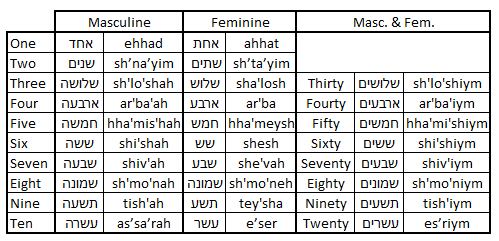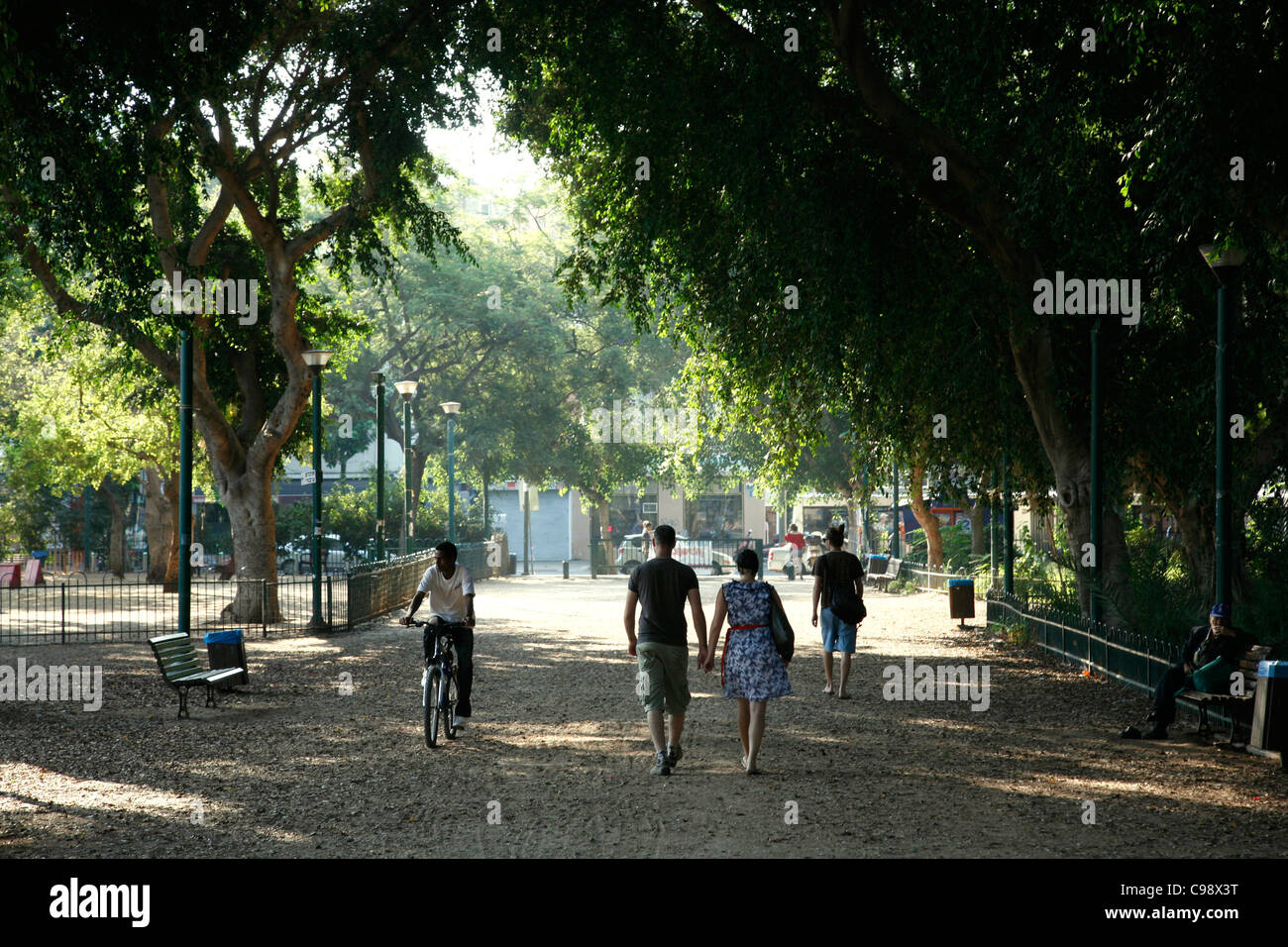Tag: hebrew
Learning Hebrew. A Series. Week 18 Lesson 18: “Getting Married.” Blog: 235
Hebrew
Shalom everyone: “Ma nishma?” This week in Lesson 18, we going to learn how to inflect et [alef+tav] a preposition for accompanying the pronoun you; we are also going work with the 6th group of verbs: We are at Lesson 18– “Getting Married”. Total Time [8:50].
-
SETTING: O’rit and Ronen’s Apartment in Tel Aviv
- Starring: O’rit & Ronen.
Fig. 2
Lesson Synopsis & Overview
In this lesson we will learn how to inflect the preposition את. (pronounced like the “et” in closet). We will learn how to use the 6th group of verbs in Hebrew. We will also see what happened on the morning of Orit and Ronen’s wedding day. The script / dialogue– is color coded to allow you to follow the verb or the vocabulary
- This is Lesson 18: “Getting Married”
Pronouns: masculine singular, feminine singular, masculine plural and feminine plural (Review)
- Ani (m/f) = I
- Anoknu (m/f) = we
- Atah (m-s) = you
- at (f-s) = you
- atem (m-pl) = you (pl)
- aten (f-pl) = you (pl)
- who/hu (m-s) = he or it
- he/hi (f-s) = she or it
- hem (m-/f-pl) = they or [mixed group of males and females]
- hen (f-pl) = they [female only group]
- Also mixed groups of people take the male form.
I. Preposition Groups: [0:24]
- et = you: preposition – (alef + tav); [א +ת] ; (inflected, as in conjugation, used with pronouns; pronouns are listed above and below).
- [0:24 ] et = you [alef + tav] [א + ת] See below pronouns in singular and in plural.
- e.g ani’ ohev otak — I love you [atah] (m-s). [0:37]
- e.g. ani ohev otaak — I love you [at] (f-s). [0:43]
- [0:32 – 1:05] alef + tav = [א + ת] ; (inflected below)
- ani otei [ א +ו +ת + י ] alef + vav + tav + yud]; atah otak [alef + vav +tav + khaf_sofit] [א +ו +ת +ך], at otaak (same as for atah –nikud and inflection) [א +ו +ת +ך], hu oto [alef + vav + tav + vav] [ א + ו + ת + ו], he otah [alef + vav + tav + hei] [ א + ו + ת + ה] Singular Pronouns
- anuknu otanu [alef + vav + tav + nun+ vav] [א + ו + ת + נ + ו ]; atem ekhem [alef + tav + khaf + mem_sofit] [א + ת + כ + ם], aten ekhen [alef + tav + khaf + nun_sofit] [א + ת + כ + ן], hem aotam [alef + vav + tav + mem-sofit [א + ו + ת + ם] , hen otan [alef + vav + tav + nun_sofit] [א + ו + ת + ן] Plural Pronouns [1:06]
- hee makira et danah v’ron. She knows Dana and Ron. [1:10]
- hee makira aotam. She knows them. (A mixed groups gets the male agreement. This is plural and a mixed group.) [1:15]
- anuknu otanu [alef + vav + tav + nun+ vav] [א + ו + ת + נ + ו ]; atem ekhem [alef + tav + khaf + mem_sofit] [א + ת + כ + ם], aten ekhen [alef + tav + khaf + nun_sofit] [א + ת + כ + ן], hem aotam [alef + vav + tav + mem-sofit [א + ו + ת + ם] , hen otan [alef + vav + tav + nun_sofit] [א + ו + ת + ן] Plural Pronouns [1:06]
-
Conjugating the 6th Verb Group. Present Tense [1:23]
- ani otei [ א +ו +ת + י ] alef + vav + tav + yud]; atah otak [alef + vav +tav + khaf_sofit] [א +ו +ת +ך], at otaak (same as for atah –nikud and inflection) [א +ו +ת +ך], hu oto [alef + vav + tav + vav] [ א + ו + ת + ו], he otah [alef + vav + tav + hei] [ א + ו + ת + ה] Singular Pronouns
II. Conjugations – transliteration
-
-
- Le’hechoten = to marry. (lamed +hei/hey + tav + cheit + tav + nun_sofit [final Nun]);
- [verb 6th group] [1:26]
- Le’ tza ‘lem – to take pictures/to shoot a video (*tzadi+ lamed + mem)
- [verb 4th group] [3:45] *(alternate spelling also tsadi or tsadei)
-
- [1:27] Le’he’choten – to marry = [cheit + tav + nun] [ ח + ת + נ ] = root letters
- met ‘ (c)haten [m-s]; [1:32] [מתחתן] [mem+tav+cheit+tav+nun_final]
- met ‘ (c)hatenet [f-s];
- met ‘ (c)hat’nim [m-pl];
- met ‘ (c)hat’not [f-pl]. [1:39]
-
All the forms of this verb start with [ מ+ת ] =me’t (look at the nikkud below each letter). This is typical to the sixth verb group.
- [1:47] Le’ heet’labesh – to get dressed = [lamed + bet + shin] [ל + ב +ש] = root letters
- met‘ labesh [m-s]; [1:50] [מתלבש] [mem+tav+lamed+bet+shin]
- met‘ labesh-et [f-s];
- met‘ lab‘shim [m-pl];
- met‘ lab‘shot [f-pl]. [1:58]
- [2:00] Le’ heet’tro’gesh – to be/get excited = [ resh + gimel + shin] [ר + ג + ש] = root letters
- met‘trogesh [m-s]; [2:05] [mem+tav+resh+gimel+shin]
- met’trogesh-et [f-s]; [2:08]
- met’troge’shim [m-pl;
- met’troge’shot [f-pl]. [2:10]
- [2:14] Le’ heet’quolech – to shower/to take a shower = [qof + lamed + cheit] [ ק +ל + ח ] = root letters
- mem the t‘(c)holea’ch [m-s], [2:16] (this is the guttural sound-froback of the throat throughout this verb (c)h).
- met‘cho’lach’hat [f-s];
- met‘chol‘(c)him [m-pl];
- met‘chol‘(c)hot [f-pl]. [2:24]
-
-
-
-
-
 Fig. 3
Fig. 3
-
-
-
[2:26] When the first letter of the root is shin [ש] or samech [ס]; [סש] — it switches it position with the letter tav [ת], for easier pronunciation–
-
- [2:36] Le’ hesh ‘tomesh – to use = [shin + mem + shin] [ש +מ +ש ] = root letters
- mes‘tomesh [m-s], [2:16] (this is the guttural sound-from the back of the throat throughout this verb (c)h).
- mes‘tomesh’et [f-s];
- mes’tome’shim [m-pl];
- mes‘tome’shot [f-pl]. [2:48]
- [2:53] Le’ hesh ‘torek– to comb one’s hair = [samech + resh + qof] [ס +ר +ק ] = root letters
- mes‘torek [m-s], [2:55] (this is also the guttural sound-from the back of the throat throughout this verb (c)h)/ck.
- mes‘torek’et [f-s];
- mes’tore’kim [m-pl];
- mes‘tore’kot [f-pl]. [3:03]
-
[3:06] When the first letter of the root is tzadei [צ]; — it switches it position with the letter tav [ת], for easier pronunciation– However, there is an additional modification– tav [ ת ] changes to tet [ ט ]
- [3:17] Le’ hetz ‘ta’er – to plead/be sorry = [tzadei + ayin + resh] [צ +ע +ר ] = root letters
- metz‘ta’er [m-s], [3:22]
- metz’ta’er‘et [f-s];
- metz’ta’ar’im [m-pl];
- metz’ta’ar‘ot [f-pl]. [3:30]
- [3:33] Le’ hetz ‘ta’lem – to be photographed/filmed = [tzadei + lamed+mem] [ צ + ל + מ ] = root letters
- metz‘ta’lem [m-s], [3:34]
- metz’ta’lem‘et [f-s];
- metz’tal’mim [m-pl];
- metz’tal’mot [f-pl]. [3:43]
- [3:45] Le’tza’lem – to take pictures/to shoot a video = [tzadei + lamed+mem] [ צ + ל + מ ] = root letters [member of the 4th verb group]
- met’tza’lem [m-s], [3:58]
- met’tza’lem‘et [f-s];
- met’tzal’mim [m-pl];
- met’tzal’mot [f-pl]. [4:04]
III. Vocabulary [4:09]
- [4:12] busy- a’sook; [layin + samech + vav + qof]
- [4:18] really – ma’mash [mem + mem + shin]
- ani ma’mash a’sook I am really busy.
- [4:26] soap- sa’bon; [samech+ bet + vav+nun-sofit]
- [4:30] quietly- be’she’ket; [bet + shin + qof + tet ]
- adverb–means “in quiet” “be” = in “she’ket” = quiet
- [4:43] already – ka’var; [qof + b/vet – resh]
- [4:45] normal – normali [m-s]; [nun + vav + resh + mem + lamed + yud]
- [4:51] normal – normalit [f-s]; [nun + vav + resh + mem + lamed + yud + tav].
- [4:56] naked – a’ room; [ ayin + resh + vav + mem-sofit]
- [5:06] honey/darling/sweetie – ma’ mi [m/f] [mem + alef + mem + yud] …a term of endearment. It is asexual, can be used by both sexes.
- Dialogue begins: “Getting Married.” Let’s listen in. [5:15]
IV. The Dialog : “Getting Married.” [Dialogue 5:19] [Dialogue w/ Hebrew Subtitles- 7:29]
Getting Married: Fig. 4
- Orit: [Orit adjusting camera] [5:23] [7:27] “Boker tov”! Good morning! [She then introduces herself while Ronen looks on] (capitalization is for English understanding; there are no capital letters in Hebrew)
- Orit: (O’rit to camera) [5:29] Ani v’Ronen met ‘ hat’nim ha’yom, v’ani ka’var; met’trogesh-et. ma’ mi? Me and Ronen [Ronen & I] are getting married today, and I am really excited… Sweetheart? sweetie/darling/honey? [5:22] [7:34]
-
- Ronen: ma? What?
- Orit : atah ba Le‘ hetz ‘ta’lem ? You’re here take pictures/shoot a video? [5:35] [7:39]
- Ronen: ani lo rotzah Le’ hetz ‘ta’lem. ani a’sook. I don’t want to take pictures. I am busy. [5:36] [7:40]
- Orit: atah lo met‘trogesh? You’re not excited? [5:39][7:44]
- Ronen: met‘trogesh , met‘trogesh. Excited, excited..
- Ronen continues: at lo Le’ heet’labesh? Don’t you have to get dressed? [5:41] [7:46] (scene change)
- Orit: (O’rit to Ronen in the shower…) ma’ mi? atah ema shelakh ba’telefon. Sweetie, your mother is on the telephone. [5:46] [7:50]
- Ronen: (Ronen-off-camera and in the shower). –ani lo y’kol la’daber aksha I can not talk now! Ani met‘(c)holea’ch. I’m taking a shower. [5:47] [7:53] (Ronen continues)
- Orit: hu, lo y’kol la’daber ackshav. Hu met‘(c)holea’ch. He cannot talk right now. He’s taking a shower. [5:51] [7:56]
- [7:58] Ronen: ma at_aysha po? What are you doing here? [5:57]
- Orit: ani mes‘torek’et. I am combing my hair. [Orit continues] atah mes‘tomesh ba’ sa’bon hadash? Are you using the new soap? ma’ mi? Sweetie? [6:00] [8:07]
- [8:10] Ronen: [aggravatedly) ma? What? [6:04]
- [8:11] Orit: (Orit to Ronen off screen): atah mes‘tomesh ba’ sa’bon hadash? Are you using the new soap? [6:06]
- [8:12] Ronen: ani lo yodea. ani rotzah Le’ heet’quolech be’she’ket. I don’t know. I want to take a shower in quiet (peace). [6:08]
- [8:15] Orit: slicha ma’ mi sheli, ani metz’ta’er‘et. Sorry Sweetie. I am sorry. [6:11]
- [8:20] Orit: (Orit to camera): hu ma’mash ohev otei, v‘ gam, v’ani ma’mash ohevah oto. He really loves me and I (also) really love him (too). [6:16]
- [8:27] Ronen: [Coming out of the shower, Ronen looks toward the camera] (Makes a long sigh in exasperation); at lo normalit! You’re not normal! (You are crazy!) ma at met’tza’lem‘et can? What are you shooting/filming here? (“Why the hell are you shooting here?”) ani a’ room! I am naked! [6:22]
/https://public-media.si-cdn.com/filer/lostark_main_dec07_631.jpg) Fig. 5.
Fig. 5.
V. Vocabulary and Phrases Explained by Daniel
[6:35] [7:26]
- [6:35] Orit: [talking to camera] ani v’ronen ma’kirim ka’var (c)ha’mesh shanim. Me and Ronen [Ronen & I] have known each other for 5-years already. [6:37] [7:26]
- [6:48] Orit: hu ma’mash ohev otei, (v’ gam) v’ani ma’mash ohevah oto. He really loves me and I (also) really love him. [6:54] [8:20]
- [7:00] Ronen: at lo nomalit! You’re not normal! (You are crazy!) ma at metz’ta’lem‘et can? What are you shooting/filming here? (“Why the hell are you shooting here?” ani a’room! I am naked! [7:23]
-
Adjectives-vocabulary
- none
Verbs Used Explained
- Only three verb tense – Past, Present, Future
Vocabulary with Dialogue:
- see above
Shalom. See you soon! Ve’L’hitriot!
Comments
- Comment: moderately long lesson. Length: [8:50]
- Open in new window; view side-by-side.
- Oh, when you see this (c)h –remember – that this sound is “guttural” no English equivalent; the closest sound is “loch” as in loch ness.
- Question and Answer Worksheets are below: The Closing.
Questions in Lesson
- none
Review Lesson-none
Review of the frequently used pronouns
- “hee” = she;
- “hen” = they feminine plural;
- “hu” = he; masculine singular
- “hem” = is they; masculine or mixed group plural);
- “gam” = also; v’gam = and also
- “anachnu” = we .
- “atah” = you (m-s);
- “at” = you (f-s),
- “atem” = you (m/f-pl).
- “aten” = you (f-pl)
- zi, zot = “this”, “these.”
Closing Conclusion & Summary
In this lesson we learned how to chat about asking for help. Up Next: Lesson – 19: “Going to the Movies.”
Exercises: https://goo.gl/NMxBhL; Answers: https://goo.gl/KKEzKE
Self-test: none
During our learning Hebrew journey, don’t be discouraged. It does take some time, but you are empowered. Namaste. Most importantly, find your peace while you study & we will stay the course. Shalom.
 Fig. 6
Fig. 6
Credits:
Images/Video by: Main: Fig. 1 Yemenite Jews a Wedding: “Jewish Israelis of Yemenite Heritage Continue reading Learning Hebrew. A Series. Week 18 Lesson 18: “Getting Married.” Blog: 235
Learning Hebrew. A Series. Week 17 Lesson 17: “Can You Help Me?” Blog: 234
Hebrew
Shalom everyone: “Ma nishma?” This week in Lesson 17, we going to learn how to ask for study help; we are also working with adverbs and to express one’s needs and abilities: We are at Lesson 17– “Can you Help Me?”. Total Time [9:37].
-
SETTING: Mi’chal and Doron’s Apartment in Tel Aviv
- Starring: Mi’chal and Do’ron.
 Fig. 2
Fig. 2
Lesson Synopsis & Overview
In this lesson we will learn how to inflect the preposition של. You will learn how to use adverbs in Hebrew, and how to express needs and abilities. We will also see what happened when Doron asked Michal for help with his homework.
- This is Lesson 17: “Can you help me?”
Pronouns: masculine singular, feminine singular, masculine plural and feminine plural (Review)
- Ani (m/f) = I
- Anoknu (m/f) = we
- Atah (m-s) = you
- at (f-s) = you
- atem (m-pl) = you (pl)
- aten (f-pl) = you (pl)
- who/hu (m-s) = he or it
- he/hi (f-s) = she or it
- hem (m-/f-pl) = they or [mixed group of males and females]
- hen (f-pl) = they [female only group]
- Also mixed groups of people take the male form.
I. Adverb Groups: [0:28]
- shel = of: adverb – (shin + lamed); [ש + ל ] ; (also used in the possessive case ‘mine’, ‘my’ )
- [0:28] Shel = of [shin + lamed] [ש + ל ] See below pronouns in singular and in plural.
- e.g Ha’ chover shel do‘rit– The friend of Dorit; Dorit’s friend. [0:34]
- [0:43 – 1:05] sheli = [ shin+ lamed + yud] [ ש + ל + י];
- ani sheli; atah shelakh [shin + lamed +khaf_sofit] [ ש +ל +ך], at shelaak (same as for atah –nikud and inflection), hu shelo [shin + lamed + vav] [ ש + ל + ו ], he shelah [shin + lamed + hei] [ ש + ל + ה] Singular
- anuknu shelanu [shin + lamed + nun + vav] [ ש + ל + נ + ו ] ; atem shelakhem [shin + lamed + khaf + mem_sofit] [ש +ל + כ + ם ], aten shelakhen [shin + lamed + khaf + nun_sofit] [ש +ל+ כ+ן ], hem shelahem [shin + lamed + hei + mem-sofit [ ש + ל + ה + ם] , hen shelahen [shin + lamed + hei + nun_sofit] [ ש + ל + ה +ן] [1:08] Plural
-
[1:09] These words always appear after the noun; the noun must be definite, as in the case above “the friend,” and preceded by Ha.
- e.g. *HaYeladim shelakhem… The children of… Their children *capitalized only for emphasis
- e.g. HaSafer she’lah… Her book
- e.g. HaMachshev shelaak… His computer
-
[1:28] Adverbs: discussion continues. There are several ways to form them in Hebrew. 1. Use as an adj . w/o any change; 2. When used as an adverb, it follows the verb.
- e.g. ‘tov’ = good, is an adj. yet, the statement: ani yodea ivrit tov. I know Hebrew well. ‘tov is used as an adverb modifying the degree to which one knows Hebrew–“well”. [1:40]
- e.g. ‘mitzuyan/mitzooyan’ = excellent/great! hen, makirot aoto_mitzuyan. They know him extremely well. [1:53]
- e.g. ‘qasheah‘ = hard/difficult. anoknu avodim qasheah. We work hard. [2:05]
- e.g. ‘yashar’ = straight. aten holikot yashar. You go straight. You’re walking straight. You’re going straight. [2:19]
- e.g. ‘tzareck’ = things needed. or actions required. hu tzareck hoolzah cha’da’sha. He needs a new shirt. [3:54]
-
[2:31] Adverbs: discussion continues. There is another way to form an adverb in Hebrew.
Use the letter bet[ ב ] ba: (sounds like bay) and used with a noun. ba+noun. (It is the second-letter “b” with the nikkud/points). (Often written as b’….)
- e.g. ‘simcha’ = happy/joy/happiness. adv- ba’simcha = in happiness b’simcha. hu holek levakr at_a’frat ba’simcha. He goes to visit Efrat happily. [2:37]
-
[2:51] While some words, always are used- only as adverbs.
- e.g. ‘yamina’ = to the right [2:58] formed from yamin = right. lefnot yamina. [to] Make a right turn. To turn right. lefnot = to turn. (Written also as lephnot.)
- e.g. ‘smola’ = to the left [3:11] or left– formed from the word smol = left. lefnot smola. [to] Make a left turn… to turn left.
- ani sheli; atah shelakh [shin + lamed +khaf_sofit] [ ש +ל +ך], at shelaak (same as for atah –nikud and inflection), hu shelo [shin + lamed + vav] [ ש + ל + ו ], he shelah [shin + lamed + hei] [ ש + ל + ה] Singular
II. Conjugations
-
-
- Le’phnot/le’fnot = to turn. (lamed + pe/fe + nun + vav + tav);
- [verb 3rd group]
- La’a’zor = to help. (ayin+ zayin + resh);
- [verb 2nd group]
-
- [3:23] Le’ph’not – to turn = [peh + nun + hei] [ פ + נ + ה ] =
- po ‘ neh [m-s]; [3:26]
- po ‘ nah [f-s];
- po ‘ nehim [m-pl];
- po ‘ nehot [f-pl]. [3:32]
- [3:37] La’a’zol – to help = [ayin + zayin + resh] [ע + ז +ר] =
- o‘ zer [m-s]; [3:40]
- o‘ zer-et [f-s];
- o‘ zerim [m-pl];
- o‘ zerot [f-pl]. [3:50]
- [3:54] Tzareck – to talk about things that are needed = [tzadei + resh + yud + khaf_sofit] [ צ +ר +י +ף] =
-
- e.g. [3:58] hu tza’reck holtzah hadasha. He needs a new shirt.
- tza’reck [m-s]; [4:06]
- tzareck’ha [f-s]; [ צ + ר + י + כ + ה] (4:08)
- tzareck’him [m-pl;
- tzareck’hot [f-pl]. [4:11]
- e.g. [4:02] hu tza’reck holtzah hadasha. He needs a new shirt.
- e.g. [4:17] hen tza’reckhot la’cha’pes malon. They need to look for a hotel. (or) They must… (or) They have to… [4:24].
-
- ]4:27[ ye’chol– able = [yud + kaf + vav + lamed] [י +כ +ו +ל ] = atah yechol lenasot. You can try.
-
- [4:40] This verb does not have an infinitive form “to”– (Jump to vocabulary section)
- ye’chol [m-s], [4:33]
- ye’cholah [f-s];
- ye’chol‘im [m-pl];
- ye’chol‘ot [f-pl]. [4:38]
-
-
-
-
-
-
 Fig. 3
Fig. 3
-
-
-
III. Vocabulary [4:40]
- [4:48] why?- la’ma; [lamed + mem + hei ]
- lama at_holecket? Why are you [f-s] going?
- [4:57] because- ke; [kaf + yod]
- ke ani tza’reckha la’zoer Ha’beita? Because I have to go back home.
- [5:08] here- kan; [kaf + alef + nun_sofit] i.e. po [pey + hei] (or) [pe +hey]
- [5:16] many/much- har’be; [hei + resh + bet + hei ]
- [5:27] afterwards/later/then – [vk] achar-kha; [alef + cheit + resh – kaf + khaf_sofit]
- lo eckshin! Not now! (there may have been some mix-up on this one)
- [5:32] end – sof [samech + vav + pey=fey_sofit]
- [5:36] mistake – ta’oot [tet + ayin + vav + tav]
- [5:40] a notebook – machberet [mem + cheit + bet + resh + tav]
- [5:45] pencil – ee’pa’ron [ayin + (yud) pey + dalet + nun_sofit]
- [5:50] thank you – toda [tav + vav + dalet + hei ]
- todah ra’ba. Thank you very much. [ תודה רבה ]
- Dialogue begins: Can you help me? Let’s listen in. [5:59]
IV. The Dialog : “Can You Help Me?” [Dialogue 5:59] [Dialogue w/ Hebrew Subtitles- 8:05]
- Michal: [Mi’chal calls to Do’ron] Do’ron? Do’ron? . – Doron! Then she touches his leg to stir him. [6:08] [8:01]
- Doron: (removes his earplugs/headphones) ma? What?
- Michal: zot Ha‘ma machberet shelakh? Is this your notebook?
- Doron: ken, la’ma? Yes, why? [6:29] [8:22]
- Michal: yesh kan har’be ta’oot. There are many mistakes here.
- Doron: qasheah lilamod anglit. It’s hard/difficult to teach English. [6:30][8:25]
- Doron: at yodeat anglit tov. You know English well? [6:33] [8:29]
- Mi’chal:ani yodeat anglit mitzuyan. “I know English extremely well”.
- Michal : hahorim sheli amrikanim, v’gam_hahorim shelahem amrikanim. My parents are American, and their parents are also American. [6:40] [7:26]
- Doron: at yekolaa La’a’zol li bevakesha? You can help me, please? (can you help me please? [8:37]
- Michal : ken ani ye’cholah lak b’simcha. I can happily help you. [6:48][8:40]
- Doron: todah/toda rabah! Thank you very much! [8:43] (Doron continues)
- Doron: ze ha’ee’pa’ron shelaak? Is this your pencil (or) Is this pencil yours?
- Michal : ken, atah tza’reck at Ha’ee’pa’ron. Yes. You need the pencil? [8:45] (Michal passes the pencil to Doron).
- [8:48] Doron: toda . Thank you.
- Doron: [writes in his notebook] [Michal makes correction] [6:58] [8:51]
- Doron: yeez, todah/toda rabah. Gee, thank you. [8:57]
- Michal: bevakesha. Please. [7:05] [8:58]
- [9:00] Doron: ze ha’sof shel Ha‘machberet. Ani tza’reck liknot machberet hadasha. This is the end of the notebook. I need to buy a new notebook.
- [9:04] Doron: at yodeat eifo ani ye’chol Liknot machberet ? Ani tza’reck liknot Ha‘machberet hadasha. Do you know from where I can buy the noteboook? I need a new notebook.
- Michal: ken, yesh chnot lik ha’bait Yes, there is a shop for you. [7:05] [9:08] Michal to Doron: atah holek yashar, po ‘ neh smola v’ achar-kha yamina. Mi’chal — You go straight, turn left and then right. [7:43] [9:09]
- [9:13] Doron: sabba. toda! Okay. Thank you!
 Fig. 4.
Fig. 4.
V. Vocabulary and Phrases with Daniel
[7:26]
- Michal : hahorim sheli amrikanim, v’gam_hahorim shelahem amrikanim. My parents are American, and their parents are also American. [6:40] [7:26]
- Michal to Doron: atah holek yashar, po ‘ neh smola v’ achar-kha yamina. Mi’chal — You go straight, turn left and then right. [7:43]
-
Adjectives-vocabulary
- none
Verbs Used Explained
- Only three verb tense – Past, Present, Future
Vocabulary with Dialogue:
- none
Shalom. See you soon! Ve’L’hitriot!
Comments
- Comment: moderately long lesson. Length: [9:37]
- Open in new window; view side-by-side.
- Oh, when you see this (c)H –remember – that this sound is “guttural” no English equivalent; the closest sound is “loch” as in loch ness.
- Question and Answer Worksheets are below: The Closing.
Questions in Lesson
- none
Review Lesson-none
Review of the frequently used pronouns
- “hee” = she;
- “hen” = they feminine plural;
- “hu” = he; masculine singular
- “hem” = is they; masculine or mixed group plural);
- “gam” = also; v’gam = and also
- “anachnu” = we .
- “atah” = you (m-s);
- “at” = you (f-s),
- “atem” = you (m/f-pl).
- “aten” = you (f-pl)
- zi, zot = “this”, “these.”
Closing Conclusion & Summary
In this lesson we learned how to chat about asking for help. Up Next: Lesson – 18: “Getting Married.”
Exercises: https://goo.gl/DJ2fzy Answers: https://goo.gl/7Zhu8p
Self-test: none
During our learning Hebrew journey, don’t be discouraged. It does take some time, but you are empowered. Namaste. Most importantly, find your peace while you study & we will stay the course. Shalom.
 Fig. 5
Fig. 5
Credits:
Images/Video by: Fig. 1 Too Much of a Good Thing: “Studying and the Law of Diminishing” from Broadview University. Fig. 2 “Can you help me study?” from Nigel-Wattpad.com Fig. 3 What is the uncertainty principle? “Also, can you help me study ?” from Boston College Libraries. Fig. 4 “Things That Help Me Study…” On We Heart It.com. Video “Can you help me?” Lesson 17 w/ Daniel Gaynor; Recorded 12 Jul 2018. Fig 5: “Help me to study” from Time Management Tools Pinterest.
“Can You Help Me?” Take 2-weeks on this lesson
Blog 234; Volume 6
(c) 2015-2215 crew @ miracle production enterprises, inc.
Learning Hebrew. A Series. Week 16 and Lesson 16: “The Food Delivery” Blog: 233
Hebrew
Shalom everyone: “Ma nishma?” This week is Lesson 16. We have been inundated with cv-19 as of late, and the call has been for “social distancing”, so this lesson is most befitting in keeping with the idea of smart tips during a troublesome time. In this lesson. We are going to learn how to ask, by a phone call, for food delivery: We are at Lesson 16– “The Food Delivery.”
-
SETTING: Anat and Tomer’s apartment/dera
-
Fig 2
Lesson Synopsis & Overview
In this lesson you will learn the present form of the 5th verb group in Hebrew! We will also learn a lot of new food vocabulary and see what happens when Tomer and Anat wants to order food delivery (Daniel, 2018).
Table 1: Other Nikkud

Table 2: Ivrit Alef-Bet
Fig 3
I. Conjugations–Present Form of 5th Verb Group [0:25]
-
- Le’Ha (c)hlit – to decide – (in conjugation the lamed disappears)
- root = cheit, lamed, tet = [ח + ל+ ט][0:30]
- ani machlit (masculine-s) [I decide]; atah machlit [you decide] (m); hu machlit [he decides]
- ani machlitah (feminine-s) [I decide]; at machlitah [you decide] (f); he machlitah [she decides] (f)
- anoknu machlitim (male-pl) [we decide]; atem machlitim [you decide] (m-pl); hem machlitim [they decide] (m-pl)
- anoknu machlitot (female-pl) [we decide]; aten machlitot [you decide] (f-pl); hen machlitot [they decide] (f-pl)
- LeHazmin – to order/to invite – root = zayin, mem, nun = [ ז + מ +נ] (in conjugation the lamed disappears) ma-zamin [1:01]
- ani ma-zamin (male-s) [I order ]; atah ma-zamin [you order] (m); hu ma-zamin [he orders]
- ani ma-zaminah (female-s) [I order]; at ma-zaminah [you order] (f); he ma-zaminah [she orders]
- anoknu ma-zaminim (male-pl) [we order]; atem ma-zaminim [you order] (m-pl); hem ma-zaminim [they order] (m-pl)
- anoknu ma-zaminot (female-pl) [we order]; aten ma-zaminot
- [you order] (f-pl); hen ma-zaminot [they order] (f-pl)
- LeHazle(c)h – to succeed/to manage to do something– root = tzadei, lamed, cheit = [ צ + ל + ח] (in conjugation the lamed disappears “ma”) [1:17]
- ani ma-zeli(c)h (male-s) [I succeed/manage]; atah ma-zelich [you succeed] (m); who ma-zelich [he succeeds]
- ani ma-zelicha (female-s) [I succeed/manage]; at ma-zelicha [you succeed/manage] (f); he ma-zelicha [she succeeds/manages] (f-s)
- anoknu ma-zelichim (male-pl) [we *succeed]; atem ma-zelichim [you succeed] (m-pl); hem ma-zelichim [they manage] (m-pl)
- anoknu ma-zelichot (female-pl) [we succeed/manage]; atem ma-zelichot [you succeed/manage] (f-pl); hen ma-zelichot [they succeed/manage] (f-pl) *interchangeably used
-
Commentary- [1:34] When the 1st letter of the root is YUD/yod, the prefex “ma” changes “mo” (mem with vav).
- Lahotzi – to take out – root = yud, tzadei, alef = [י +צ א] ] (in conjugation the lamed disappears, while the yod/y appears ) [1:42]
- ani motzi (male-s) [I take out]; atah motzi [you know] (m); who motzi [he knows]
- ani motziaa (female-s) [I take out]; at motziaa [you take out] (f); he motziaa [she takes out] (f-s)
- anoknu motziaim (male-pl) [we take out]; atem motziaim [you take out] (m-pl); hem motziaim [they take out] (m-pl)
- anoknu motziaot (female-pl) [we take out]; atem motziaot [you take out] (f-pl); hen motziaot [they take out] (f-pl)
-
Commentary- [1:34] When the 2nd letter of the root is YUD/yod, or VAV, the prefix “ma” changes “me” (mem with nikkud).
-
- LeHavim – to understand/to know – root = bet, yud, nun = [ ב + י + נ ] (in conjugation the lamed disappears, while the vav appears ) [2:03]
- ani mevin (male-s) [I understand]; atah mevin [you understand] (m); who mevin [he understands]
- ani mevinah (female-s) [I understand]; at mevinah [you understand] (f); he mevinah [she understands] (f-s)
- anoknu mevinim (male-female-pl) [we understand]; atem mevinim [you understand] (m-pl); hem mevinim [they understand] (m-pl)
- anoknu mevinot (female-pl) [we understand]; atem mevinot [you understand] (f-pl); hen mevinot [they understand] (f-pl)
-
Commentary- [2:18] When the 1st letter of the root is NUN, the nun drops.
- LeHakir – to know someone -person-place-object– root = nun, haf/kaf, vet = [ נ +כ +ב] (in conjugation the lamed disappears, while the mem appears )[2:30]
- ani makir (male-s) [I know]; atah makir [you know ] (m); hu makir [he knows]
- ani makirah (female-s) [I know]; at makirah [you know] (f); he makirah [she knows] (f-s)
- anoknu makirim (male-pl) [we know]; atem makirim [you know] (m-pl); hem makirim [they know] (m-pl)
- anoknu makirot (female-pl) [we know]; atem makirot [you know] (f-pl); hen makirot [they know] (f-pl)
-
Commentary- [2:41] LeHakir means to know be familiar with a person, place, thing, or object
-
Commentary- versus Lada’at (yoda’at) which means to know skills or facts/information.
- Le’Ha (c)hlit – to decide – (in conjugation the lamed disappears)
II. Vocabulary of The Food Delivery [2:57]
-
- Manah (f): dish/course : (mem+nun+hei)
- rishon means first : (resh+alef+shin+vav+nun)
- e.g. Yom Rishon = First Day (of the week) = Sunday [3:12]-
- e.g. manah rishonah – first course (meal) [3:03]
- ‘Rishon’ in female form ‘Rishonah’ [3:18]. (resh+alef+shin+vav+nun+hei))
- e.g. manah ekorit– main course (meal) [3:24] (ayin+qof+resh+yud+tav)
- e.g. manah rishonah – first course (meal) [3:03]
- qa’nu(c)ha : dessert (qof+nun+vav+cheit) [3:31]
- me’shlo(c)ha : delivery (mem+shin+vav+cheit)
- taphorit : menu (tav+pe/fe+resh+yud+tet) [3:38]
- taphoritim : menus (tav+pe/fe+resh+yud+tet+yud+mem_sofit)
- tanur : oven (tav+nun+vav+eesh) [3:45]
- gev’nah : cheese [3:48] (gimel+bet+yud+nun+hei)
- ya’rekot : vegetables (yud+resh+qof+vav+tav)
- ag’veniot : tomato (ayin+gimel+bet/vet+nun+yud+vav+tav)
- cha’tzel : eggplant (cheit+tzade+yud+lamed) [4:02]
- betata : sweet potato (bet+tet+tet+hei)
- pelpal : pepper (pe+lamed+pe+lamed) [4:10]
- batzal : onion (bet+tzade+lamed)
- kuurvit : cauliflower (kaf+resh+vav+bet/vet+yud+tav)
- teras : corn (tav+yud+resh+samech) [4:22]
- az atem rotzim leackol kuurvit oi teras ? (az = so) ; (oi =or) : So, do you (pl) want to eat cauliflower or corn? [4:25]
- dag : fish (dalet+gimel) manah ekorit dag – main course fish —
- glida : ice cream [4:50]
- az atem rotzim leackol qa’nu(c)ha b’ glida? So do you want to eat ice cream for dessert ? [4:55]
- Manah (f): dish/course : (mem+nun+hei)
- The Dialogue begins below.. Let’s listen [4:59]
-
Food Delivery
-
Fig 4
-
III. Anat and Tomer’s apartment/dera, Tel Aviv [5:08–6:27] Dialogue w/ Hebrew [6:32]
- [5:08/6:34] Anat to Tomer: Tomer —
- atah motziaa Et Ha-taphoritim? Tomer you want to pull out the menus?
- Tomer reaches down and he pulls out the menus.
- Tomer to Anat : [5:18] Tomer: ma at ma-zaminah lemona rishona? What do you want to order for a first course?
- Anat : ani lo yodeat. rega (moment). I don’t know. “Wait a moment”.
- Tomer : at ma–zelicha leh-havin Et Ze? Do you know what this is? “Can you manage to understand this?” “colloquial” Do you get it? [7:00-19] (verb lehavin followed by a definite noun, pronoun or name ze = this/that
- Tomer continues : “colloquial” Do you get it? Ma ze? anti… ma? What is? “Anti …”What?”
- Anat : antipasti … Antipasta > >Jump down to the conversation {5:39] <<
- Anat : Tov! ze ani ma-zaminah et oogat Ha-geve’nah– Well, this is me ordering the cheesecake. (Well, that’s my order- the cheesecake)
- The cheesecake, in Hebrew is 2-words- “cheese cake” it’s in the construct form
The word אֶת (et) and the construct form:
“semikud” “oogat Ha-geve’nah”
-from lesson 15) [7:36-7:58]
- The cheesecake, in Hebrew is 2-words- “cheese cake” it’s in the construct form
- [8:02] Repeat of Conversation-
- Anat : Tov, atah motziaa Et Ha-taphoritim? Well, you want to pull out the menus?
- Tomer reaches down and he pulls out the menus.
- [8:13] Tomer: ma at ma-zaminah lemona rishona? What do you want to order for a first course?
- Anat : ani lo yodeat. rega (moment). I don’t know. “Wait a moment”.
- Tomer : at ma–zelicha leh-havin Et Ze? Do you know what this is? “Can you manage to understand this?” “colloquial” Do you get it? Ma ze? anti… ma? What is? “Anti …”What?”
- [5:39] Anat : antipasti … Antipasta [5:39]
- Tomer : ma ze? ani lo makir. What is this? I do not know?
- Anat : zat manah shal ya’rekot Ba’tanur. It’s a course/dish/meal, with vegetables from the oven… cha’tzel, betata, pelpal, batzal, kuurvit. Eggplant, sweet potato, pepper, onion, cauliflower…
- [5:43] Tomer : ahhhh. ani mevin. [8:37] Oh, I understand.
- [5:45] Anat : ani rotza marok teras Le’manah rishonah. I want corn soup for the first serving. [8:39]
- [5:49] Tomer : ani ma-zamin Et Ha-antipasti Le’manah rishonah….vat Ha-orf Le‘ manah ekorit- I am ordering the antipasta dish for a first course and the chicken for a main course. [8:44]
- [5:55] Anat : ani ma-zaminah Et Ha’dag Le’ manah ekorit. I am ordering the fish for the main course. [8:50]
- [5:59] Tomer : Va-ma rotza La-konot? And what [else] do you want to buy?
- [6:01] Anat : ani lo ma-zelicha La-(c)helit… glidah oi oogat Ha-geve’nah-? I can’t decide to order either ice cream or cheesecake?
- [6:05] Tomer : ani rotza et Ha-glidah. I want ice cream. [8:59]
- [6:07] Anat : Tov, ani ma-zaminah Et oogat Ha-g1eve’nah-
- [6:11-23] Anat on the phone to restaurant/mesada: Halo: anuknu rotzim La-ma-zaminim me’shlo(c)ha. We want to order for delivery.
- [6:25-28] Anat : Ma! atem lo aoshim me’shlo(c)him!! You don’t make deliveries!! [9:20]
הסוף – the end – h’sef
IV. Nikkud
-

Fig 4
Fig 6
הסוף the end h’sef
Questions and Answer sheets are below: The Closing
Vocabulary and Phrases Found within the dialogue are above
Adjectives-vocabulary -none
Vocabulary & Verbs Usage Reminder
- Only three verb tense – Past, Present, Future
Comments
- Moderately long lesson about 10-minutes.
- Beginning is conjugations of verbs:
- Advice: Continue to take it slow. Use transliterations. Open video in new window and view them side-by-side. If there is something that you do not understand, please, do send me a “message or comment” or email.
Shalom and See you soon! Shalom ve’ le’hetriot!
Review of the pronouns
“who” = he m/s; is “hem” = they (masculine plural); “who” = she f/s hen” = they (f- plural), “gam” = also. “anachnu” = we. “atah” = you (m-s). “at” = you (f/s); “atem” = you (m/f-pl); “aten” = you (f-pl). The words for “this”, “these.” “Zi, Ze, & Zot”
Use this or any video to return to often whenever you feel the need. Suggestion: Also use the YouTube site w/ Daniel and use the script above to help. Open in a separate window.
Closing Conclusion
Learn Hebrew: Lesson 16 – The Food Delivery – The 5th Verb Group: • Jul 5, 2018 Learn Hebrew with Daniel
Up Next: Learn Hebrew: Lesson 17 – Can you help me? – Inflection of של, adverbs, needs & abilities. Learn Hebrew with Daniel
Find your peace while you study & let’s stay the course. Shalom.
credits
Images/Videos by: Fig. 1 Featured Image: “Food Delivery” from Cayman Compass. Fig. 2 Meal Kits Meal Kit & Food Delivery Safety” from lutheranhomessc.com. Fig. 3 The Spruce-Eats- “the 6 Cheapest Meal Delivery Services” from the Spruce Eats. Fig. 4 Down Home “Down Home Delivery & Catering “ from downhomedelivery.com. Fig. 5 Down Home “Down Home Delivery & Catering “ from downhomedelivery.com. Video-Lesson: “The Food Delivery & %th-Verb Group” Lesson 16 w/ Daniel Gaynor; Recorded Jul 25, 2018; Tables from Judaism 101.
“The Food Delivery and the Fifth-Verb Group“ Take 2-weeks on this lesson FYI: Lesson 17 will fall during the Passover and the Omer Count, some expect delays. Thank you for your patience. Cecilia
Blog 232; Volume 6
(c) 2015-2215 crew @ miracle production enterprises, inc.
Learning Hebrew. A Series. Week 15 and Lesson 15: “The Apartment”
Hebrew
Shalom everyone: “Ma nishma?” This week in Lesson 15, we going to learn how to ask and to view an apartment: We are at Lesson 15– “The Apartment”
-
SETTING: An Apartment in Tel Aviv Being Shown by Oree
-
Fig 2
Lesson Synopsis & Overview
In this lesson we will learn how to use the word אֶת in Hebrew and we will talk about the construct form. We will also visit an apartment in Tel Aviv and learn the names of all the different rooms. This is Lesson 15: “The Apartment” featuring Oree.
Table 1: Other Nikkud

Table 2: Ivrit Alef-Bet
Hadar Ambathia–Bathroom
Fig 3
I. Vocabulary of The Apartment [0:27] w/ transliterations
-
- et : the
- (definite article vs ‘a/an’ indefinite articles) (aleph+tav) [0:16-26]
- used after a verb e.g. He went to the store-
- the verb is followed by a name [1:10]
- Recognizing a definite direct object- the letter “hey/hei” ה in front of a noun e.g. ha’sefer [0:44](hey/hei+samech+pe/fe+resh)
- e.g. he koret et ha’safer – She reads the book. [0:45]
- e.g. hem me’ vo’ kohr’im et ha’moreh – They are visiting the teacher . or
- When followed by a name–
- e.g. hen me’hopsot et “edo” : They (f-pl) are looking for Edo/Ado – the verb used is followed by a name [1:11
- ha’safer : the book (hei+samech+fe+resh) [0:44]
- hen me’hopsot et “edo” : They (f-pl) are looking for Edo/Ado – the verb is followed by a name [1:11]
- hanoot : shop (hei+nun+vav+tav)
- b’ gadrim : clothing (bet+gimel+dalet+yod+mem_sofit) [1:28]
- beit : house [1:48] bet+yud+tav)
- safer : book (samech+fe+resh)
- ba’it safer : school
- ba’it kafe : coffee shop
- heder : (a) room (cheit+dalet+resh) [2:33]
- yeladim : children
- hadar yeladim : children’s room [2:42]
- ambathia : bath [2:48] (alef+mem+bet+tet+yud+hei)
- shna : sleeping (shin+nun+hei–shin+nun+hei) [2:55]
- hedrai shna : Bedrooms [3:25]
- beit (s) = batim (pl) [3:37] in a semikud beit becomes “bait” as in the following:
- Schools = bataa safer [3:44] (bet+tav+yod)
- shakolat : chocolate shin+vav+qof+vav+lamed+dalet
- oogat shokolat : chocolate cake [4:17]
- oogot shokolat : chocolate cakes [4:30]
- ro'(c)hovot : streets
- cheifa : Haifa [4:38]
- et : the
-
Vocabulary continues [4:50]
- dera : Apartment (dalet+yod+reah+cheit) [4:53]
- salon : Living Room (samech+ lamed+vav+nun_sofit) [4:58]
- merpeset : Balcony (mem+resh+pe+sameck+tav) [5:00]
- mitbach : Kitchen (mem+tet+bat+cheit) [5:07]
- sharotim : Toilets or Services (shin+resh+vav+tav+yod/yud+mem_sofit) [5:12]
- le’ad : near (lamed+yud+dalet) [5:17] e.g. the shop is near the house – ha’chnoot le’ad ha’beit. [5:26]
- rachok me– : far (resh+cheit+vav+qof+ mem-) [5:29] e.g. the shop is far from the house— ha’chnoot rachok_”cha” me– ha’beit [5:31]
- The Dialogue begins below…
II. Construct Form “semikud” (samech+mem+yud+kaf+vav+tav) (English= compound words e.g foot+ball = football) [1:20] w/ transliterations
- hanoot b’gadim : Clothes Shop (hei+nun+vav+tav– bet+gimel+dalet+yod+mem_sofit) [1:31]
-
- h’noot = shop, & be’gadim = clothes; or [the] clothes-shop [1:40] sometimes the first word of the compound construct changes: (see below)
-
- bA-it +sefer : School
-
- beit = house, & safer = book; or (the) School [1:59]
- the sound of beit for house changes to bait [2:08]
-
- bait +kafe : Coffee House (bet+yod +tav– qof+fe+hei) [2:13]
-
- bait = house, & kafe = coffee; or [the} coffee shop (coffee house) [2:22]
-
- hadar +yeladim : Children’s Room (child’s bedroom) (cheit +dalet+resh–yud/yod+lamed+dalet+yod+mem_sofit) [2:42]
-
- hadar = (a) room, & yeladim = children or = (the) Children’s Bedroom
-
- hadar +ambathia : Bathroom (cheit +dalet+resh–alef+mem+bet+tet+yud+hei) [2:48]
-
- (hadar = (a) room, & ambathia = bath or = (the) Bathroom
-
- hadar +shna : Bedroom (cheit +dalet+resh–shin+nun+hei–shin+nun+hei) [2:54]
-
- (hadar = (a) room, & shana = sleeping or = (the) Bedroom
- Notes: Forming Plurals-1st Noun: The masculine plural form ending “IM” ‘im’ Is changed to “A” w/ yud
- e.g. heder = (cheit+ dalet+resh) plural is hedarim. In construct now becomes hedrai sh’na (cheit+dalet+resh+yud) [3:22]
- hedrai shna : Bedrooms [3:25]
- beit (s) bait in compound and bataa (pl) safer : Schools [3:44]
- *If first word in semikud is plural, the spelling remains the same
- The feminine plurals with 1st Noun ending in “ta” or ‘tav’, there is no change. [3:54] e.g. h’noot = (cheit+ nun+vav+tav) plural is stable [3:57]
- hanoot b’gadim : Clothes Shop(s) (hei+nun+vav+tav– bet+gimel+dalet+yod+mem_sofit)
- The feminine plurals with 1st Noun ending in “ha” or ‘hei’ ה, we change the ending to “tav”ת [4:05]
- e.g. oogah = cake (ayin+ vav+gimel+ hei) plural is changed to (ayin+ vav+gimel+ tav) = oogat [4:11]
- *If the plural form ends in “ot” or “vav+tav” nothing is changed.
- whether it is feminine or masculine [4:25]
- e.g. oogot shokolat = chocolate cakes plural is changed to (ayin+ vav+gimel+ tav) = oogot [4:30]
-
- r'(c)hovot +cHaifa : Streets of Haifa [4:38] (resh +cheit+vav+bet+vav+tav–cheit+yod+fe+hei) r’ch’vot = streets; chaifa =Haifa or Streets of Haifa [4:41-48]
-
Mitbach–Kitchen
-

Fig 4
III. Daniel at Oree’s apartment, Tel Aviv [5:40–7:42] Dialogue w/ Hebrew [8:02]
- [5:48] Daniel to Olee on the phone: Alo Olee? Hi Olee?
- Olee on the phone to Daniel: Hi, ma’ nishma?
- Daniel: beseder ma’nishma? [5:53] [I’m] Okay, how are you?
- Olee: beseder, atah ba lerot et he’dorah Okay. Are you coming to rent the apartment? [7:52-59]
- Daniel: ken! b’azo v’ hetzi? Yes, in half and hour?
- Olee: sebaba, le’hetriot ! Okay! See you soon! [8:45]
-

Fig 4
Hadar Shna–Bedroom
Fig 5
III. Oree and Daniel’s Dialogue w/ Hebrew Continues [8:45]
-
- Oree: sebaba, le’hetriot ! Okay! See you soon! [8:45] Daniel: Bye [8:48]
Oree in person w/ Daniel: Shalom korim l’ Oree, ani garah b’tel aviv v’yesh li sheti banoot. Hi I am Oree [I am called] Oree, and I live in Tel Aviv, and I have two daughters.
- Daniel: yesh bait-safer le’ad ha’ biet? Is there a school near the house?
- Oree: ken, yesh bait-safer le’ad ha’ biet, bait-kafe, hanoot b’gadim. Yes, there is a school near the house, a coffee shop and clothes shops. [9:03]
- Daniel: kama ha’drim yesh? How many rooms are there?
- Oree: yesh badarah, ar’ba ha’drim. yesh ha’salon ! The apartment has 4-rooms ! [Over] There is the living room [9:08-9:12]
Oree shows Daniel the Apartment. [9:14]
-
- zot ha‘merpeset. atah ro’ach ha’ r'(c)hovot? This the Balcony. [9:17] You see the street?
- zeh mitbach : This is the Kitchen [9:27]
- hadar-ambathia : Bathroom [9:38]
- sharotim : Toilets; [9:50]
- hadar-shna : Bedroom [10:00];
- hadar-yeladim : Children’s Room [10:08]
- od hadar-yeladim : More/Another children’s room
- Daniel : yesh shi’te hedrai yeladim? [10:22] There are two children’s bedrooms?
- Oree: ken yesh shi’te hedrai yeladim. Yes, there are two children’s bedrooms. [10:22]
- Daniel : toda, le’hetriot ! Thank you! See you soon! Oree : le’hetriot ! [10:30] See you later!
הסוף the end h’sef
Questions and Answer sheets are below: The Closing
Vocabulary and Phrases Found within the dialogue are above
Adjectives-vocabulary
- numbers – found within the dialogue
Vocabulary & Verbs Usage Reminder
- Only three verb tense – Past, Present, Future
Comments
- Moderately long lesson about 10-minutes.
- Beginning is mostly vocabulary Advice: Continue to take it slow. Use transliterations. Open video in new window and view them side-by-side. If there is something that you do not understand, please, do send me a “message or comment” or email.
Shalom and See you soon! Shalom ve’ le’hetriot!
Review of the pronouns
“who” = he m/s; is “hem” = they (masculine plural); “who” = she f/s hen” = they (f- plural), “Gam” = also. “Anachnu” = we. “Atah” = you (m-s). “At” = you (f/s); “Atem” = you (m/f-pl); “Aten” = you (f-pl). The words for “this”, “these.” “Zi, Ze, & Zot”
Use this or any video to return to often whenever you feel the need. Suggestion: Also use the YouTube site w/ Daniel and use the script above to help. Open in a separate window.
Closing Conclusion
Learn Hebrew: Lesson 15 – The Apartment – The word אֶת (et) and the construct form: • Jun 17, 2018 Learn Hebrew with Daniel
Up Next: Lesson – 16 “Food Delivery” Learn Hebrew: Lesson 16 – The Food Delivery – The 5th Verb Group [9:45]
Don’t be discouraged, rather be empowered. Namaste.
Find your peace while you study & let’s stay the course. Shalom.
Table 3: Hebrew / Ivrit Numbers
credits
Images/Videos by: Fig. 1 Featured Image: “Luxury Apartments, NYC” from Apartment.com. Fig. 2 Luxury Apartments Mayfair Luxury Apartments” from MyIsraelTrip.com. Fig. 3 bathroom designs-small spaces – “Bold Design Ideas-Small Bathrooms” from Elle Decor.com. Fig. 4 Kitchen Ideas “Open Kitchens” from HGTV.com. Fig. 5 Image from Home Lover: “20 Charming Indian Home Decorations in the Bedroom.” from Home Design Lover.com. Video-Lesson: “The Apartment” Lesson 15 w/ Daniel Gaynor; Recorded Jun 17, 2018; Image from Ancient-Hebrew: “A History of the Hebrew Word for One.” from “Ancient-Hebrew.org.” Tables from Judaism 101.
“The Apartment“ Take 3-weeks on this lesson
Blog 231; Volume 6
(c) 2015-2215 crew @ miracle production enterprises, inc.
Learning Hebrew. A Series. Week 14 Lesson 14: “Looking for a Hotel”
Hebrew
Shalom everyone: “Ma nishma?” This week in Lesson 14, we going to learn how to ask and look for a hotel; we are also working with the 4th verb group: We are at Lesson 14– “Looking for a Hotel”.
-
SETTING: Mi’chal and Do’ron’s Apartment in Tel Aviv
- Starring: Mi’chal and Do’ron.

Lesson Synopsis & Overview
Within this lesson of Hebrew vocabulary we are learning the present tense of fourth and second- verb groups, and there is some new vocabulary. The activity centers on Do’ron and Mi’chal, “Looking for a Hotel in Italy.
- This is Lesson 14: “Looking for a Hotel”
Pronouns: masculine singular, feminine singular, masculine plural and feminine plural (Review)
- Ani (m/f) = I
- Anoknu (m/f) = we
- Atah (m-s) = you
- at (f-s) = you
- atem (m-pl) = you (pl)
- aten (f-pl) = you (pl)
- who/hu (m-s) = he or it
- he/hi (f-s) = she or it
- hem (m-/f-pl) = they or [mixed group of males and females]
- hen (f-pl) = they [female only group]
- Also mixed groups of people take the male form.
4th-Verb Group Roots: [0:18]
- Le’sa’ chek = to play. Infinitive – Lamed in the infinitive, followed by (mem + sihn + chet + qof);
- Le’cha’fes = to look fo. (chet + pe + sihn/seen);
- Le’dabir + to talk. (dalet + bet + resh);
- Le’va’ker = to visit. (vet + qof + resh);
- Le’shelim = to pay. (shin + lamed + mem);
- Le’na’ sot = to try. (nun + samech + hey);
- Kof, Tav, Vet;
- 8. Alef, Kof, Lamed.
- [0:21] Le’sa’chek = to play [sihn + chet + qof ] [ש + ח + ק] =
- me‘sa’chek [m-s]; [0:25]
- me‘sa’che’ket [f-s];
- me‘sa’che’-kim [m-pl];
- me‘sa’che’-kot [f-pl] [0:36]
- [0:52] Le’cha’pes – to look for = [chet + peh + seen/sihn] [ח + פ + ש] =
- me‘ cha’pes [m-s]; [1:00]
- me‘ cha’pes-et [f-s];
- me‘ chap-sim [m-pl];
- me‘ chap-sot [f-pl]. [1:03]
- [1:05] Ladaber – to talk = [dalet + bet + resh] [ד + ב + ר] =
- me‘ da’ber [m-s]; [1:07]
- me‘ da’beret [f-s];
- me‘ da’brim [m-pl;
- me‘ da’brot [f-pl]. [1:15]
- [1:18] ani me’daber im anat. I am talking with Annett.
- ]1:29[ Le’vo’koher– to visit = [bet + qof/kof + resh] [ב + ק + ר] =
- me‘ vo’ kher [m-s], [1:33]
- me‘ vo’ kher’et [f-s];
- me‘ vo’ khr’im [m-pl];
- me‘ vo’ khr’ot [f-pl]. [1:40]
- anoknu me’ vo’ khr’im b‘israel. We are visiting (in) Israel.
- [1:55] Le’sha’lem – to pay = [shin + lamed + mem] [ש + ל +מ]
- me ‘sh’lem- [m-s]; [1:58]
- me‘ sh’lem’et [f-s];
- me‘ shl’mim [m-pl];
- me ‘shl’mot [f-pl]. [2:04]
- anoknu me’sh’lim lo eserim shekel. We pay him 20 shekels.
- ל [prep. usually used] [lamed+vav as ‘o’ sound] [2:16]
- If last letter is hey/hei or yud/yod, the verb’s voice inflections change. See next 2-examples-
- [2:29] Le’ na’ sot – to try = [nun + samech + hey] [נ + ס + ח]
- me‘no’seh [m-s]; [2:35]
- me‘no’sah [f-s];
- me‘ no’ sim [m-pl];
- me‘ no’ sot [f-pl]. [2:40]
- [2:44] Le’cha’kot – to wait = [chet + kaf + hey] [ח + כ + ה]
- me‘cha’keh [m-s]; [2:47]
- me‘cha’kah [f-s];
- me‘cha’kim [m-pl];
- me‘cha’kot [f-pl].
- he me’cha’kah lah. She’s waiting for her. [lamed+chet]
- ל [prep. usually used] [lamed+hey as ‘la’ sound] [2:58]
- Jump to Vocabulary [3:06] below fig. 3.
2nd-Verb Group Roots: [6:48]
- [6:50] Lomar – to say = [alef + mem + resh] [א + מ. + ר]
- omer [m-s] [6:56] alef + vav (o-sound) + mem + resh
- omeret [f-s]
- omerim [m-pl] [6:59]
- omerot [f-pl]
-
- to report what someone says, the verb is used with [ש] shin to say ‘sh’ah’ = that. [7:03]
- he omeret sh’ah (c)holah She says that she is sick. [7:11] omeret sh’_ah = she says that
 Fig. 3
Fig. 3
- to report what someone says, the verb is used with [ש] shin to say ‘sh’ah’ = that. [7:03]
-
Vocabulary [3:06]
- hotel- ma’lon; [mem+ lamed+vav+nun_sofit]
- Italy- italiah; [alef+yod+tet+lamed+yod+hey]
- computer- machshev; [mem+chet+shin+vet]
- game- me’ schot!; [mem+sihn+chet+kof/qof]
- but – aval; alef+vet+lamed] [3:34] Jump to Dialog [3:41]
- not yet – ad’yin [ayin+dalet+yod+nun] [5:20]
- Dialogue begins: Looking for a Hotel. מחפש’ מלון Let’s listen in.
The Dialog [3:40] [Dialogue 3:41] [Dialogue w/ Hebrew Subtitles- 5:28]
- Doron: ma at tasah? What are you doing?
- Michal: ani me’sa’che’ket. I am playing.
- Doron: aval anoknu me’ chap-sim me’lon! But we have to look for a hotel! [5:47]
- Doron: mi’chal anoknu tasim mahar b’arva b’boker l’atalia. Mi’chal We’re flying tomorrow at four in the morning to Italy.
- Doron: la’diyin ain lani malon! And We Still don’t have a hotel!
- Doron: tov, ani me’cha’pes b’ma’ lon! Well, I am looking for a hotel on the computer! [5:58]
- [Doron continues to talk to a distracted Mi’chal]
- [6:00] [Doron goes to the computer and types in “hotels in Italy”.]
- Doron: aof! ani menseh l’ehfes, aval ani lo yodea eifo … Ahh! I am trying to look for it, but I don’t know where… [6:16] & [7:22]
- [While Doron worries, Mi’chal continues (lesochek me’schot) to play a game]
- [6:28] [Mi’chal receives a phone call]
- Michal : helo? mah-nishma? ken, ani chlekot h’yom Hello, how are you? Yes, I am going tomorrow. [6:31]
- Doron: ma at tasah? What are you doing?
- Michal : ani me’da’beret im Inbal and Hela; hen me’ vo’ khr’ot baretz v’ain malon, aza ani me’ chap-sot la’hen malon. I am talking with/to Inbal and Hela; they’re visiting the country and have no hotel, so I am looking for them a hotel.
- [6:45] Doron bangs his head on the desk in exasperation]
- The End
- Jump to Conjugation of 2nd Group Verbs: above fig. 3.
:max_bytes(150000):strip_icc()/7-Star-Hotels-Rooms-1-579b649f3df78c3276267822.jpg) Fig. 4.
Fig. 4.
Vocabulary and Phrases with Daniel
[5:08-26]
- Doron: mi’chal anoknu tasim mahar b’arva b’boker l’atalia. Mi’chal We’re flying tomorrow at four in the morning to Italy.
- Doron: la’diyin ain lani malon! And We Still don’t have a hotel!
- We don’t have a hotel yet! – adiyin ain lanu malon!
- [7:28] who omer sh’aa_menoseh le’cha’pes – aval, who lo yodea eifo – He says he is looking for one, but he does not know where
- [7:36] ani me‘sa’che’ket. I am playing.
- he omeret sh’_ah me’sa’che’ket. She says that she is playing (a game) . [7:40]
- [7:44] ani medabarot im Ainbal v’ Hala.
- he omeret sh’_ah me’da’brot im Ainbal v’ Hola. She says that she is speaking with Inbal and Hela
Adjectives-vocabulary
none
Verbs Used Explained
Only three verb tense – Past, Present, Future
Vocabulary with Dialogue continues:
- Italia = Italy
Shalom. See you soon! Ve’L’hitriot!
Comments
- Comment: relatively short lesson. Length: [8:16]
- Oh, when you see this (c)H –remember – that this sound is “guttural” no English equivalent; the closest sound is “loch” as in loch ness.
- Question and Answer Worksheets are below: The Closing.
Questions in Lesson
- none
Review Lesson-none
Review of the pronouns
- “he” for she;
- “hen” they feminine plural;
- “who” is he; masculine singular
- “hem”is they; masculine or mixed group plural);
- “gam” is also;
- “anachnu” is we .
- you “atah” (m-s);
- you – “at” (f-s),
- you “atem” (m/f-pl).
- you “aten” (f-pl)
- The words for “this”, “these.” Zi, Zot
Use this or any video to return to often whenever you feel the need. Suggestion: Also use the YouTube site w/ Daniel and use the script above to help you additional support. Open in a separate window.
Closing Conclusion
In this lesson we learned how to chat about finding a hotel. Up Next: Lesson – 15 “The Apartment.”
Homework (Practice in Hebrew):
Exercises: https://goo.gl/aK8btp Answers: https://goo.gl/QvYPFD
Self-test:
none
During our Hebrew journey, don’t be discouraged. It does take some time, but be empowered. Namaste. And please, find your peace while you study & let’s stay the course. Shalom.
 Fig. 5
Fig. 5
Images/Video by: Fig. 1 “12-Best hotels in Vegas” from kayak.com. Fig. 2 “Holiday Inn Vegas” from kayak.com Fig. 3 “Hotels with the most comfortable beds.” from Reader’s Digest.com. Fig. 4 “How to get a 5-star hotel mattress for your bed.” The Spruce.com. Video “Looking for a Hotel” Lesson 14 w/ Daniel Gaynor; Recorded 9 Jun 2018. Fig. 5: “Luxury Hotels and Resorts” from Tivoli Hotels & Resorts.
“Looking for a Hotel Take 1-week on this lesson
Blog 230; Volume 6
(c) 2015-2215 crew @ miracle production enterprises, inc.
Learning Hebrew. A Series. Week 13 Lesson 13: “What’s the Time?”
Hebrew
Shalom everyone: “Ma nishma?” This week in Lesson 13, we going to learn how to ask about time: We are at Week 13 and Lesson 13 — “What’s the Time?”
-
SETTING: Gan Meir Park in Tel Aviv
-
Meir Park is a park dating back to the early 1940s in the center of Tel Aviv, Israel. It is named after the first mayor of Tel Aviv, Meir Dizengoff and is home to the Tel Aviv Municipal LGBT Community Center…
 Fig 2
Fig 2
Lesson Synopsis & Overview
Within this lesson of Hebrew and vocabulary, we are learning how to ask the time, the days of the week, and telling the time of something. We have learned more numbers, now we are learning how to ask someone about their daily schedule all while visiting Gan Meir Park in Tel Aviv. This is Lesson 13: “What’s the Time?” “Hours and the Days of The Week.”.
Table 1: Other Nikkud

Table 2: Ivrit Alef-Bet
Fig 3
I. Vocabulary of Time [0:23]
-
- zeman: time (zayin+mem+nun_sofit) [0:24]
- yom: day (yod+vav+mem_sofit)
- ha’yom: today (hei+yod+vav+mem_sofit)
- mah’har: tomorrow (mem+cheit+resh) [0:38]
- et’mol: yesterday (alef+tav +mem + vav + lamed)
II. Days of the Week [Ordinal Numbers] [0:46]
- yom rishon : First Day (yod +vav+mem resh+alef+shin+vav+nun) [0:50]
-
- rishon = first or Sunday = 1st work day; the work week ends on Thursday
-
- yom sheni : Second Day
-
- sheni = second or Monday = 2nd work day [1:06]
-
- yom shlishi : Third Day (yod +vav+mem shin+lamed+yod+shin+yod) [1:11]
-
- shlishi = third or Tuesday = 3rd work day
-
- yom revi’I : Fourth Day (yod +vav+mem resh+vet+yod+ayin+yod) [1:12]
-
- revi’ i = fourth or Wednesday = 4th work day
-
- yom chamishi : Fifth Day (yod +vav+mem (c)heit+mem+yod+shin+yod) [1:15]
-
- (c)hamishi = fifth or Thursday = 5th work day
-
- yom shishi : Sixth Day (yod +vav+mem shin+shin+yod) [1:19]
-
- shishi = sixth or Friday = 6th work day
-
- yom Shabbat : Seventh Day (yod +vav+mem shin+bet+tav) [1:23] Shabbat = seventh or Saturday = 7th day
-
Overview of Time
-
III. Weekend [1:29]
- Friday & Saturday = Yom Shishi v’ Yom Shabbat; shishi v’ shabbat
-
NOTE: Daniel’s questions are below at VIII.
More Vocabulary with Questions of Time [2:11]
feminine numbers used for the hour: Table 3
Use your favorite nikkud chart here’s one of mine.

Fig 4
A. shaih = hour [2:09]
-
- Q: ma haShaih ? = What time is it? [2:13]
- A: haShaih sha’losh. = It’s three o’clock.
- Q: ma haShaih akshav ? = What time is it now ?
- A: haShaih tay’sha b’Bo’ker. = It’s nine o’clock in the morning. [2:33]
- Q: v’ ma haShaih akshav ? = And what time is it now ?
- A: haShaih eser v’ sh’lo’shim b’Bo’ker. = It’s 10:30 in the morning. [2:36] or
- A: haShaih eser v’ htzi b’Bo’ker. = It’s half-past 10 in the morning
- htzi = half [2:47] (vav with qametz sounds like “vah” v’ htzi) [2:50]
- Q: v’ ma haShaih akshav ? = And what time is it now ? [2:59]
- A: haShaih ar’ba v’ ra’v’ar. = It’s quarter past 4. [3:00]
- ra’v’ar = quarter (resh+vet+ayin)
- v’ ra’v’ar pronounced vah revar [3:13]
- Q: ma haShaih akshav ? = What time is it now ? [3:19]
- A: haShaih ra’v’ar le’ shesh. = It’s a quarter to 6.
- Q: ma haShaih akshav ? = What time is it now ?
- A: haShaih ah’hat v’ esrim. = It’s 1:20. [3:30]
-
IV. Asking : What Day is it Today? [3:38]
- which (m) = a’zch (m) which +with + day [3:39]
- (a’azo = which (f) b’azo= in what…?
- Q: a’zeh yom ha’yom = What day is it today? [3:43]
- A: ha’yom yom chamishi : Fifth Day – It’s the 5th day or its Thursday.
- yom = day it is masculine [3:50]
- days = yomim [3:56]
- For asking about days = a’luu (m/f pl) [3:59]
- Q: b’ a’luu yomim atah lomed? = On what days do you study? [4:12]
- A: ani lomed b’yom sheni v’ reve-i = I study on Second Day and Fourth Day (Monday & Wednesday) [4:16]
- a’zo (f) with Shaih (f) = Asking about a particular time [4:25]
- Q: b’ azo Shaih at kama? = What time do you get up? [4:38] Literal: At what time do you get up..?
- A: ani kama b’ shishi b’ boker = I get up 6:00 in the morning [4:49]
- *azeh (m)/, a’zo (f/s), and a’luu (m/f pl) = which [4:59] (*used the most in Israel by Israeli speakers)
- matii = when [5:15]
- Q: matii at kama = when do you (f) get up? ([5:17]
- A: ani kama b’ shishi b’ boker. [5:20] I get up at 6 in the morning.
- Q: matii aten holekot le’shon? = When will you (f-pl) go to sleep?
- A: anoknu holekot lishon b’ Shaih ahat-esrei = We go to sleep at [23:00] 11:00 pm. [5:34]
- which (m) = a’zch (m) which +with + day [3:39]
V. The Main Parts of the Day & The Meals
-
-
- boker = morning [5:40]
- zoh’rim = noon [5:46]
- a(c)h’ri zoh’rim = after-noon [5:53]
- erev = evening [5:55]
- lilah = night [6:01]
The 3-Main Meals of the Day
-
- a’roh(c)ha = meals [6:05]
- a’roh’cha boker = meal of morning breakfast [6:10]
- a’rohcha zoh’rim = meal of noon – lunch [6:14]
- a’rohcha erev = meal of evening – dinner [6:19]]
-
-
VI. Verbs = m/f singular/plural: La’hzor a verb in the 3rd Group [6:30]
L’hazor = To Return (To Come Back , To the Circular) [6:30] [Drop the Lamed] These were in Lesson 9: Mi’chal is sick
- hoz’rer = m/s
- ho’ze’ret = f/s
- hoz’rim = m-pl
- hoz’rot = f-pl [6:43]
The wonder of time
Fig 5
VII. Daniel at Gan Meir Park, Tel Aviv [6:50]
Dialogue w/ Hebrew
More questions about the time are below at QUESTIONS [4:56]
Daniel to female 1 in park: Shalom, ma nishma?
-
- b’azo shaih at kama? [6:50] Hi, how are you? At what time / When or What hour/ Which time did you come? [6:52]
- all are variants of the question
- b’azo shaih at kama? [6:50] Hi, how are you? At what time / When or What hour/ Which time did you come? [6:52]
Female 1: ani kama b’shevat b’boker. I came at 7 o’clock in the morning.[6:54]
- Daniel to female 1: b’azo shaih at (f) holekot la ‘ avodah? At what hour do you (f) go to work? [6:58]
- Female 1: ani holekot b’ tay’shar b’ boker. I go to work at 9 o’clock in the morning. [7:00] Questions are below
Daniel to male 1 in park:
- Shalom, ma nishma? b’azeh shaih atah hoz’rer ma’ avodah? [7:32] Hi, how are you? At what time will you return from work?
Male 1: ani hoz’rer ma’ avodah b’sheva b’erev. I will return from work at 7 o’clock in the evening. [7: 38]
- Daniel to male 1: b’ azeh shaih atah okhel a’rohcha erev? [7:40] In what/which hour or What time or When are you eating [having] dinner?
- Male 1: a’rohcha erev, ani okhel b’shaih sh’mo’neh. [7:44] Dinner, I eat at 8 o’clock.
Daniel to male 2: b’ azeh shaih atah hoz’rer ma’avodah? When will you return from work? [8:09]
Male 2: ani hoz’rer ma’avodah b’ she’vat v’ hetzi. I return from work at 7:30. [8:10]
- Daniel to male 2: b’ azeh shaih atah holech li’shon ? At what time [when] do you go to sleep?
- Male 2: ani holech li’shon b’ sh’tim-eshrei v’hetzi. I am going to sleep at 12:30 am [00:30]. [8:21]
Daniel to female 2 in park: b’azo shaih at kama b’boker? At what/which time / When or What hour/ time did you come? [8:43]
Female 2: ani kama b’boker b’shishi v’ esrim. I came at 6:20 in the morning.[6:54]
- Daniel to female 2: b’azo shaih at (f) hokhlot a’rohcha boker ? Which hour will you eat breakfast?
- Female 2: ani okhelot a’rohcha boker b’ shaiah ra’v’ar le’shvah. I eat breakfast at a quarter to 7.
הסוף the end hsef
Vocabulary and Phrases Found within the dialogue
Adjectives-vocabulary
- numbers – found within the dialogue
Vocabulary & Verbs Used Explained
- Only three verb tense – Past, Present, Future
Vocabulary with Dialogue continues:
- none
Comments
- Moderately long lesson under 10-minutes.
- Beginning is mostly vocabulary Advice: Continue to take it slow. Use transliterations. Open video in new window and view them side-by-side. If there is something that you do not understand, please, do send me a “message or comment” or email.
-
(c)h) or (k)h it is to show you that this sound is “guttural” no English equivalent, however, close to the sound loch as in loch ness monster.
:max_bytes(150000):strip_icc()/1440px-Loch_Ness_Monster222-bf5c3e619ca44607a549bbcddbd0c71c.jpg) Fig 6
Fig 6 - Note: Question and Answer Worksheets are below: The Closing.
VIII. Questions/Statements
- [1:36] To work Lesson 8: The Interview Oved, Ovedet, Ovdim, Ovdot
- S: b’ yom rishon ani oved. I work on Sunday [1:38]
- Q: ma atem m’osim b’yom rishon? What are you doing on sunday? [1:40]
- A: gam b’yom shlishi ani oved. I also work Tuesday. [1:43] (or) Also on Tuesday I work.
- Q: ma atem m‘osim b’yom slishi? What are you doing on Tuesday?
- S: b’ yom shabbat ani lo oved. I do not work on Shabbat. [1:55]
- S: b’ yom shabbat ani am haMishpaha. I on Shabbat I am with the [whole] family.
- Q: ma atem m’osim b’yom shabbat? What are you doing on Shabbat? [2:03] (return to lesson above: A)
- A: b’ yom shabbat ani am haMishpaha. On Shabbat, I am with the family.
[7:05] Female 1 in Park
- Q: b’ azo shaih he kama? In which hour did she come? [7:05]
- A: he’ kama b’ shaih shevat b’boker. or he kama b’shevat b’boker. She came at 7 o’clock in the morning. [7:10] or [7:12]
- Q: b’azo shaih he (f) holekot la ‘ avodah? At which time/hour does she go to work? [7:23].
- A: he holekot la’ avodah b’ tey’ sha b’boker. She goes to work at 9 o’clock in the morning. [7:27]
[7:48] Male 1 in Park
- Q: b’ azo shaih who hoz’rer ma’ avodah? in which hour [When] is he returning from work? [7:50]
- A: who hoz’rer ma’ avodah b’ she’vat b’ erev? He is returning from work at 7 o’clock [19:00] in the evening. [7:58]
- Q: b’ azo shaih who okhel a’rohcha erev ? [8:00] Which hour will he eat dinner?
- A: who okhel a’rohcha erev, b’shaih sh’mo’neh. [8:03] He eats dinner at 8 o’clock [20:00].
[8:25] Male 2 in Park
- Q: b’ azo shaih who hoz’rer ma’avodah? Which hour will he return from work? [8:23]
- A: who hoz’rer ma’avodah b’ she’vat v’ hetzi. He returns from work at 7:30. [8:27]
- Q: b’ azo shaih who holech li’shon ? At which time [when] does he go to sleep?
- A: who_holech li’shon b’ sh’tim-eshrei v’hetzi. He’s going to sleep at 12:30 am [00:30].
[8:42] Female 2 in Park
- Q: b’ azo shaih he kama b’ boker? Which hour will she come in in the morning? [8:59]
- A: he kama b’boker b’shishi v’ esrim. She comes at 6:20 in the morning.
- Q: b’azo shaih who (f) hokhlot a’rohcha boker ? Which hour will you eat breakfast? [9:05]
- A: he okhelot a’rohcha boker b’ shaih ra’v’ar le’shvah. She eats breakfast at a quarter to 7 or 6:45.
Closing Questions [9:18]
- Q: a’zeh yom ha’yom = What day is it today? [3:43]
- A: ha’yom yom revi’i : Fourth Day – It’s the 4th day or its Wednesday. [9:20]
- Q: ma haShaih akshav ? = What time is it now ?
- A: haShaih sha’losh b’ach’ri- zoh’rim. = It’s three o’clock in the afternoon. [9:23]
- Q: b’azo shaih atem (pl) okhelim a’roh(c)ha zoh’rim? Which hour will they eat lunch?
- A: anoknu okhelim a’roh(c)ha zoh’rim b’ shaiah sha’losh. We will eat lunch at 3:00.
- Q: : b’ azo shaih atem holechim li’shon ? At what time [when] will you go to sleep? [9:28]
- A: anoknu holechot li’shon b’ sh’mo’neh v’hetzi b’erev. We go to sleep at 8:30 in the evening.
Shalom and See you soon! Shalom ve’ l’hitraot!
Right-Click on the link below: Lesson 13: “What’s the Time? will open in new window.
https://www.youtube.com/watch?v=ronbNv36NLw
Review Lesson
Review of the pronouns
“who” = he m/s; is “hem” = they (masculine plural); “who” = she f/s hen” = they (f- plural) , “Gam” = also. “Anachnu” = we. “Atah” = you (m-s). “At” = you (f/s); “Atem” = you (m/f-pl); “Aten” = you (f-pl). The words for “this”, “these.” “Zi, Ze, & Zot”
Use this or any video to return to often whenever you feel the need. Suggestion: Also use the YouTube site w/ Daniel and use the script above to help. Open in a separate window.
Closing Conclusion
In this lesson we learned how to ask and answer questions in shopping. Up Next: Lesson – 14 “Looking for a Hotel?”
Learn Hebrew: Lesson 14 – Looking for a Hotel – Present form of the 4th verb group.
- Exercises: https://goo.gl/D4zu1F
- Answers: https://goo.gl/DFTrjA
Self-test review
Don’t be discouraged, rather be empowered. Namaste.
Find your peace while you study & let’s stay the course. Shalom.
Table 3: Hebrew / Ivrit Numbers

credits
Images by: Fig. 1 Discovery Channel “The True Nature of Time” from Discovery Channel on YouTube Jul. 17, 2015. Fig. 2 Time Out “Gan Meir (Meir Park) in Tel Aviv” from Time Out. Fig. 3 blogs.ancient “The End of Time: Not What You Think” from blogs.ancientfaith.com. Fig. 4 community.logos “A Very Basic Hebrew Pronunciation Question” from community.logos.com. Fig. 5 Image from giphy stock: “Clocks.” from giphy.com. Fig. 6 ThoughtCo “Facts, Not Myths, About the Loch Ness Monster.” Video: “What time is it?” Lesson 13 w/ Daniel Gaynor; Recorded May 25, 2018; Image from Ancient-Hebrew: “A History of the Hebrew Word for One.” from “Ancient-Hebrew.org.” Tables from Judaism 101.
Disclaimer
Transliterations vary, there is no right way nor wrong way to interpret a language devised of symbols. English, therefore, tries its best. So, don’t be alarmed by different spellings of Hebrew words being sounded out.
“…and there were dwelling at Jerusalem Jews, devout men, out of every nation under heaven.. Now, when this was noised abroad, the multitude came together, and were confounded, because …Everyman heard it in his own language”(Acts/Gevurot 2: 5-8).
“What’s the Time? Take 2-weeks on this lesson
Blog 228; Volume 6
(c) 2015-2215 crew @ miracle production enterprises, inc.
Learning Hebrew. A Series. Week 12 Lesson 12: “How Much Does it Cost?”
Hebrew
Shalom everyone: “Ma nishma?” This week in Lesson 12, we going to learn how to ask about prices: “How much something cost.” We are at Week 12 and Lesson 12 — “How Much Does it Cost?”
Please, note the following: If you have trouble viewing the page, select another way to view it i.e. tablet view, or phone view vs the large desktop view.
-
McDonald’s at The Dizengoff Center Mall in Tel Aviv
Lesson Synopsis & Overview
Within this lesson of Hebrew and vocabulary, we are learning how to ask the price of something, we are learning more numbers, and we are learning how to ask someone’s age all while we visit some shops. This is Lesson 12: “How Much Does It Cost, Prices, Clothes, and More Numbers“.
Table 1: Other Nikkud

Table 2: Ivrit Alef-Bet
Vocabulary Clothes [0:23]
-
- seamlah: dress (sihn+mem+lamed+hei) [0:25]
- holtzah: shirt (cheit+lamed+tsade+hei)
- na’al: sneaker (nun+ayin+lamed)
- na’ali‘im: (2)shoes (nun+ayin+lamed+yod+mem_sofit) [[im] =2] [0:40]
- mic’nasi’im: (2)pants (mem+kaf+nun+samech+yod +mem_sofit)
- kovah: hat (kaf+vav+vet+ayin) [0:56]
- mae’el: jacket (mem+ayin+yod+lamed) [1:03]
-
Vocabulary Numbers [1:09]
-
NOTE: To review numbers, refer to lesson 10 part one. Also, numbers have genders- masculine and feminine
[1:16 ]Numbers 13-19– How to: combine 10 with the unit digits for teens. Example–sh’lo’shAH is 3 + 10 = eser (m); or sholosh-esrah (f) BE MINDFUL OF THE GENDER [(#) +10] which becomes 13;
- adding eser (ayin+sihn+resh) or esrah (ayin+sihn+resh+hei)
- for males eser (ayin & sihn nikud is a kametz- gives the “ah” sound
- for females esrah (here the ayin nikud is segal – gives the “ee” sound)
- 14 = arba – esrah (f) [1:34]
- 14 = arba-ah – eser (m) [1:38]
- 13 = sha’losh – esrah (f) (shin+lamed+vav+shin)
- 17 = she’vah – esrah (f) (shin+vet+ayin)
- 19 = tay’shaa – esrah (f) (tav+shin+ayin) sounded like “chi” [1:48]
- adding eser (ayin+sihn+resh) or esrah (ayin+sihn+resh+hei)
-
Tens 10, 20, 30…. Hundreds 100, 200 same for male and female
- 20 = esrim (ayin+sihn+resh+yod+mem_sofit) [1:59]
- 30 = sh’lo’shim brother (shin+lamed+vav+shin + yod+mem_sofit) [2:01]
- 40 = ar’ba-im (alef +resh + bet + ayin + yod + mem_sofit) [2:03]
- 50 = (c)ha’me’shim (cheit + mem + shin + yod + mem_sofit) [2:06]
- 60 = she’shim (shin + shin + yod + mem_sofit) [2:09]
- 70 = sheev’im (shin + vet +hey+yod + mem_sofit) [2:12]
- 80 = shi’mo’nim (shin + mem + vav + nun + yod + mem_sofit) [2:16]
- 90 = tish’im (tav + shin + ayin + yod + mem_sofit) [2:19]
- 100 = ma’ah (mem + alef + hei) [2:21]
- 200 = ma’ taim (mem +alef +tav + yod + mem_sofit) [2:25]
- 53 people = hameshim- v’ shalosha anashim [2:32]
- 148 shops = ma’ah arbaim- v’ shmonah (c)honu’ot ([2:40]
-
Vav Pronunciations Discussed: Changes with the sound that follows its use
- Vav = ooh or vah or vee; However, most say “vey” [2:51-3:09]
-
Asking Someone’s Age (Year is Feminine)
- Man’s age = ben kama atah? [3:16] How old are you? (m)
- Ani ben shloshim v’ tashar [3:20] I am 39 years old.
- Woman’s age = bat kama at? [3:26] How old are you? (f)
- Ani bat she’shim v‘ ahat [3:33] I am 61 years old.
- shannah = a year, shnati’im = 2-years, shanim + than 2 years
- Man’s age = ben kama atah? [3:16] How old are you? (m)
Humphrey & Bacall

Laalot= to go up, to climb = also means to cost = ali’ot: from Lesson 9 answer sheet Answers: http://www.dg-global.com/wp-content/u… [4:00] $s to ₪s From dollars to shekels
- kama zey oleh? = How much does it cost? [4:07]
- shekel (m/s)- currency = ₪ symbol; shekelim (m/pl) [4:11]
- prices are masculine = zey oleh shi-shah *shekelim = That cost 6 (m) shekels.
- shekels with number 2-10 = shekelim = used in *plural form only [4:23]
- either shekel/shekelim for numbers above 10 (i.e. 11+) [4:29]
- ex. tishim v’ chammesha shekelim; or
- ex. tishim v’ chammesha shekel
- both = ₪ 95.00 [4:34]
Daniel on Sheinkien Street, Tel Aviv [4:40]
Daniel’s questions to us about the clothes are below at QUESTIONS [4:56]
- Daniel to male shopkeeper: Slicha, kama olah holtzah hazot? [4:46] Excuse me, how much is that shirt?
- Male shopkeeper: ha’holtzah hazot olah ma’tim shloshim shekel. That shirt is 230 shekels. ₪ 230.00 = $ 66.00 approx.
- Daniel to female shopkeeper: kama olah ha’seamlah hazot? How much is that dress? [5:00]
- Female shopkeeper: ha’seamlah olah ma’tim sheshim shekelim. That dress is 260 shekels. ₪ 260.00 = $ 75.00 approx.
- Daniel to female shopkeeper: Slicha, kama oliot ha’na’alim haoleh? [5:26] Excuse me, how much are these shoes?
- Female shopkeeper: hen aliot ma’ah v’ ta’shar – esrah shekelim. Those shoes are (cost) 119.00 shekels. ₪ 119.00 = $ 34.00 approx. [5:28]
- Daniel to female shopkeeper: Slicha, kama oliot ha‘mic’nasi’im haoleh? [5:26] Excuse me, how much are these pants? [5:50]
- Female shopkeeper: Ken? Yes?
- Female shopkeeper: ma’ah sheshim v’ tesher shekelim. The pants cost 169 shekelim. [5:54] ₪ 169.00 = $ 49.00 approx. [5:54]
הסוף the end hsef
Vocabulary and Phrases
- Found within the dialogue
Adjectives-vocabulary
- numbers – found within the dialogue
Vocabulary & Verbs Used Explained
- Only three verb tense – Past, Present, Future
Vocabulary with Dialogue continues:
- none
Comments
- Another short lesson under 7-minutes.
- Advice: Take it slow. And please, use the transliterations I have provided for you. OPEN VIDEO IN NEW WINDOW. If there is something that you do not understand, please, do send me a “message or comment” or email.
- Oh! RE ((c)H) when you see this (c)H or ((c)h) it is to show you that this sound is “guttural” no English equivalent, however, listen out for the sound and just practice.
- Note: Question and Answer Worksheets are below: The Closing.
Questions
- [4:56] Shirt
- Q: kama olah ha’holtzah ? How much is the shirt? How much does the shirt cost?
- A: ha’holtzah hazot olah ma’tim V’ shloshim shekelim or shekel. That shirt cost 230 shekels. ₪ 230.00 = $66.00 approx.
- [5:15] Dress
- Q: kama olah ha’seamlah ? How much is the dress?
- A: ha’seamlah olah ma’tim V’ sheshim shekelim. That dress cost 260 shekels. ₪ 260.00 = $74.00 approx.
- [5:36] Shoes
- Q: kama olot h’nal -li-im ? How much are those shoes?
- A: h’nal -li-im olot ma’ah v’ ta’shar – esrah shekelim. Those shoes cost 119.00 shekels ₪ 260.00 = $34.00 approx.
- [6:00] Pants
- Q: kama olim ha‘mic’nasi’im? How much are these pants?
- A: ha‘mic’nasi’im olim ma’ah sheshim v’teshar shekelim. These pants cost 169 shekels. ₪ 169.00 = $49.00 approx.
- [6:14] Conclusion how old is… more apparel
- Q: ben kama atah? How old are you (m)?
- A: ani ben atah arbah – eser (m) I am 14 y/o
- Q: bat kama at? How old are you (f)?
- A: ani bat kama shlosh – esrah (f) I am 13 y/o
- Q: kama oleh h’kover h’zeh? How much is this hat?
- A: zeh kover shesh shekelim. This hat is 6 shekels ₪ 6.00 = $1.70 approx.
Shalom and See you soon! Shalom ve’ l’hitraot!
Review Lesson
Review of the pronouns
“who” for him is “Hem” (masculine plural); “who” for she is “Hen” (feminine plural) , “Gam” = also. “Anachnu” = we. “Atah” you (m-s). “Atem” = they (m/f-pl). You/ They” feminine: You – “At” you (f-s), “Aten” = they (f-pl). The words for “this”, “these.” “Zi, Ze, & Zot”
Use this or any video to return to often whenever you feel the need. Suggestion: Also use the YouTube site w/ Daniel and use the script above to help. Open in a separate window.
Closing Conclusion
In this lesson we learned how to ask and answer questions in shopping. Up Next: Lesson – 13 “What’s the time?”
Learn Hebrew: Lesson 13 – What’s the time – hours and the days of the week
Homework (Practice in Hebrew):
- Exercises: https://goo.gl/D4zu1F
- Answers: https://goo.gl/DFTrjA
Self-test review
Don’t be discouraged, rather be empowered. Namaste.
Find your peace while you study & let’s stay the course. Shalom.
Table 3: Hebrew / Ivrit Numbers

credits
Images by: TimeOut “Israel’s top shopping malls and markets, antiques, and boutiques” from TimeOut. LangEasy “Where to do Shopping in Tel Aviv?” from LangEasy. gifer “Nothing You Can’t Fix” from Gifer.com. Image from alamy stock: “Tel Aviv Dizengoff Centre Shop.” from “alamy.com. “How much does it cost?” Lesson 12 w/ Daniel Gaynor; Recorded May 17, 2018; Image from Ancient-Hebrew: “A History of the Hebrew Word for One.” from “Ancient-Hebrew.org.” Tables from Judaism 101.
Disclaimer
Transliterations vary, there is no right way nor wrong way to interpret a language devised of symbols. English, therefore, tries its best. So, don’t be alarmed by different spellings of Hebrew words being sounded out.
“…and there were dwelling at Jerusalem Jews, devout men, out of every nation under heaven.. Now, when this was noised abroad, the multitude came together, and were confounded, because …Everyman heard it in his own language”(Acts/Gevurot 2: 5-8).
“How much does it cost? Take 2-weeks on this lesson
Blog 227; Volume 6
(c) 2015-2215 crew @ miracle production enterprises, inc.
Learning Hebrew. A Series. Week 11 Lesson 11: “I Have A Brother” “Have & Has”
Hebrew
Shalom everyone: “Ma nishma?” This week in Lesson 11, we learn to show possession: “I have a family, a brother; a sister.” We are concentrating on how to say – who one has in their family. We are at Week 11 and Lesson 11 — “I Have A Brother.” Please, note the following: If you have trouble viewing the page, select another way to view it like tablet view or phone view vs the desktop view.
Lesson Synopsis & Overview
Within this lesson of Hebrew and vocabulary, we are learning the possessive form, of saying I have or I do not have these family members. We will learn how to address certain members of our family, i.e. aunt(s), uncle(s). This is Lesson 11: “I Have a Brother – Possessive Form & Family“. Opening directions begin at [0:40].
Reminder: Verbs, reflect only three tenses: past, present, future. They have different characteristics and use voice inflections to differentiate between a statement and a question. They are represented in four gender forms: masculine- [singular and plural]; feminine- [singular and plural.]
However, In this lesson the “L” the lamed ל takes on various characteristics and it adjusts with the pronouns usage. The voice inflections will change, all though the letter accompanying the lamed will remain the same. The Points-Nikud, stylize this, and directs the accommodating voice inflections.
Review of Pronouns
masculine singular • feminine singular • masculine plural • feminine plural
- Ani (m/f) – I — first person [s]
- Anoknu (m/f) – we — first person [pl]
- Atah- you (m-s); –second person
- At- you (f-s); –second person
- Atem- you (m-pl); –second person
- Aten- you (f-pl); –second person
- Hu(who) – he [m-s]; –third person
- Hi(he) – she [f-s]; –third person
- Hem – they [m-/f-pl]; –third person
- Hen – they [f-pl] –third person
- mixed groups of people take on the male form.
2-Possessive Group Roots Overview:
- Yesh (yod + shin) li lamed+yod) I have; [0:40]
- Yesh לך Likha (lamed + khaf sofit כך) w/ You (m-s) nikud
- Yesh Lakh) (lamed + khaf sofit כך) You (f-s) nikud
- Yesh Lo – (lamed + vav) He Has [0:47] Yesh La (lamed+hey) She Has
- Ain (alef + yod + nun) li I don’t have
- reposition לך (Lakh (lamed + khaf sofit )
- Ain Li I Haven’t [1:18]
- Ain Lo He hasn’t [1:34] Ain La She Hasn’t [1:35] (see below for plural)
Positive Form- I have… yesh li
Singular
- Ani (m/f) – I — first person [s] Yesh li, I have — I have a book; yesh li sefer [0:47]
- Atah– you (m-s); –second person Yesh likha, you have [0:51]
- At– you (f-s); –second person Yesh laakh, you have [0:54]
- Hu(sounds like who) he [m-s]; –third person Yesh lo, he has
- Hi(sounds like he) she [f-s]; –third person Yesh la, she has [0:58]
Plural
- Anoknu– we (m/f) — first person [pl] Yesh lanu, we have [1:03]
- Atem– you (m-pl); –second person Yesh lakhem, you have [sounds like lechem] כ (khaf) (lamed+khaf+mem) [1:05]
- Aten– you (f-pl); –second person Yesh lakhen, you have [sounds like lechen] (lamed+khaf+nun) [1:07]
- Hem they [m-pl]; –third person Yesh lahem, they have ה (hey)(lamed+hey+mem) [1:10]
- Hen (they) [f-pl] –third person Yesh lahen, they have (lamed+hey+nun) [1:11]
Negative Form– I don’t / do not have/ I haven’t… ain li [1:16]
Singular
- Ani (m/f) – I — first person [s] —Ain li, I don’t have — I haven’t any book; ain li sefer [1:17-1:27] (“Ain” pronounced like “in”.)
- Atah– you (m-s); –second person Ain likha, you don’t have [1:29]
- At– you (f-s); –second person Ain laakh, you don’t have
- Hu(who) – he [m-s]; –third person Ain lo, he hasn’t [1:34]
- Hi(he) – she [f-s]; –third person Ain la, she hasn’t [1:36]
Plural
- Anoknu (m/f) – We — first person [pl] Ain lanu, we haven’t [1:38]
- Atem– you (m-pl); –second person Ain lakhem, you haven’t [sounds like lechem] [1:32] כ (lamed+^kaf+mem) ^kh
- Aten– you (f-pl); –second person Ain lakhen, you haven’t [sounds like lechen] [1:44}
- Hem- they [m-/f-pl]; –third person Ain lahem, they haven’t [1:46] ה (lamed+hey+mem)
- Hen (they) [f-pl] –third person Ain lahen, they haven’t [1:48]
Vocabulary Family [1:51]
-
- Family: mish-pa-ha (mishpa’hah) [1:56]
- Aba = father [2:03]
- Ima = mother
- Yeladim = children
- Ben = son [2:18]
- Bat = dtr. [2:22]
- Yesh lechem – shena yeladim. –They have two children [a girl & a boy] [2:27]
- Yesh lechem ben v”bat. They have a boy and a girl.[2:32]
- Banim – sons [or mixed sons and daughters] [2:37]
- Yesh lechem sh’nah banim. They have two children.
- Banot – daughters [2:48]
- Yesh lo sh’ta banot. He has two daughters. [2:50]
- Ah = brother [2:56] א ח
- Ahim = brothers [2:58]
- Ahot = sister [3:04] (alef+hey+vav+tav)
- Ah’yiot = sisters [3:10] (alef+hey+yod+vav+tav)
- Ahim = brothers and sisters (spoken of together) [3:12]
- Saba = grandfather [3:21]
- Savta = grandmother [3: 24]
- N’khd = grandson [3:28] (almost like naked) כ
- Nakhoda = granddaughter [3:30] כ k/kh kaf or khaf
- Dod = uncle [3:33]
- Dodim = uncles [3:36]
- Doda = aunt [3:38]
- Dodot = aunts [3:43]
Now let’s watch
Dialogue & Vocabulary [Transliteration] [3:49] Daniel visits the mall and park
- Book/s (m) [safer/saferim]
At The Dizengoff Center Mall in Tel Aviv [3:50] [Dialogue w/ Hebrew 3:54]

- Daniel to male shopper, Yesh likha ahim? Do you [m/s] have brothers? [3:54]
- Male mall shopper: Yesh li ah v’ahot. Yes, I have a brother and a sister.
- Daniel: Yesh likha yeladim? Do you [m/s] have children?
- Male mall shopper: Ahh, ***Lo, ain lo yeladim. Ahh- No, I do not have children. *** “No” is lamed+alef (pronounced like low)
- Daniel: Kama *ahim yesh lo? How many brothers does he have? [4:04] Yesh lo ah v’ahot. He has a brother and a sister.
-
*we could say brothers, but he told us he has brothers and sisters. Remember mixed genders take the masculine form)
- Daniel: kama yeladim yesh lo? How many children does he have? ain lo yeladim. He has no children.
- Daniel to female shopper: Shalom: “Ma nishma?” Hi, how are you?! [4:18]
- Female mall shopper: “besada todah!” Ok, (great/ wonderful /super), thanks!
- Daniel: yesh laakh ahim? Do you (f-s) have brothers or brothers and sisters?
- Female mall shopper: Ken, yesh li ah v’ahot. Yes, I have a brother and a sister.
- Daniel: Yesh laakh yeladim? – Do you (f-s) have children?
- Female mall shopper: Lo, ain li yeladim. No, I do not have children. [4:29]
- Daniel: Kama *ahim yesh la? How many brothers does she have? [4:30] Yesh la ah v’ahiot. She has a brother and a sister. [4:34] Daniel: kama yeladim yesh la? How many children does she have? [4:38] ain la yeladim. She has no children. [4:42]
At The Gan Meir Park in Tel Aviv [3:50] [Dialogue w/ Hebrew [4:44]

- Daniel to males in park: Kama dodim yesh lachem? How many uncles do you (m-pl) have? [4:44]
- Male 1 park: yesh li shevah dodim. I have seven uncles. [4:47]
- Male 2 park: yesh li **shlosh-eshr dodim. I have thirteen uncles. ** (3+10) [4:49]
- Daniel reviews: Kama dodim yesh la(c)hem? [4:52] How many uncles do you (m-pl) have?
- To-Male 1 park: yesh lo shev’ah dodim. He has seven uncles. [4:53-55]
- To-Male 2 park: yesh lo shlosh-eshr dodim. He has thirteen uncles. [5:00-08] **shlosh-eshr ** (3+10)
- Daniel to females in park: Shalom: “Ma nishma?” Hi, how are you?! [5:09]
- Daniel to females in park: kama yeladim yesh lakhen, you (f-pl) have [sounds like lechen] [5:11] כ khaf sounds like chet ח
- How many children do you (f-pl) have? [5:10-13]
- Female 1 park: li yesh shte benot. I have two daughters. [5:14]
- Female 2 park: v’li yesh bat achat. And I have one daughter [5:15]
- Daniel to females in park: kama yeladim yesh lachen? How many children do they (f-pl) have? [5:18-20]
- To Female 1 park: Yesh la shte benot. She has two daughters. [5:21]
- To Female 2 park: Yesh la bat ahat. She has one daughter. [5:25]
the end
Vocabulary and Phrases
- Found within the dialogue
Adjectives-vocabulary
- numbers – found within the dialogue
Vocabulary & Verbs Used Explained
- Only three verb tense – Past, Present, Future
Vocabulary with Dialogue continues:
- none
- Shalom and See you soon! Shalom Ve’L’hitriot!
Comments
- Another short lesson.
- Notes: the lamed plus vav and kaf sofit (pronounced like “khaf’) will alter by person. I had to slow myself down to understand him.
- Advice: Take it slow. And please, use the transliterations I have provided for you. OPEN VIDEO IN NEW WINDOW. If there is something that you do not understand do send me a “message or comment” or email.
- Oh, ((c)H) when you see this (c)H it is to show you that this sound is “guttural” no English equivalent, however, listen out for the sound and just practice.
- Note: Question and Answer Worksheets are below: The Closing.
Questions
- kama ahim yesh lakhem? How many brothers do you (m-pl) have? [5:35]
- yesh lekhem yeladim? Does you (m-pl) have children? [5:38]
- kama dodim yesh lakhem? How many uncles do you (m-pl) have? [5:40]
Review Lesson
Review of the pronouns
“who” for him is “Hem” (masculine plural); “who” for she is “Hen” (feminine plural) , “Gam” = also. “Anachnu” = we. “Atah” you (m-s). “Atem” = they (m/f-pl). You/ They” feminine: You – “At” you (f-s), “Aten” = they (f-pl). The words for “this”, “these.” “Zi, & Zot”
Use this or any video to return to often whenever you feel the need. Suggestion: Also use the YouTube site w/ Daniel and use the script above to help. Open in a separate window.
Closing Conclusion
In this lesson we learned how to ask and answer questions in family relationships. Up Next: Lesson – 12 “How Much Does it Cost?”
Learn Hebrew: Lesson 12 – How much does it cost? – more numbers, prices & clothes
Homework (Practice in Hebrew): “I Have a Brother – Possessive Form & Family“
Exercises: http://www.dg-global.com/wp-content/u…
Answers: http://www.dg-global.com/wp-content/u…
Self-test review
Test yourself on this lesson: https://poll.fbapp.io/2nd-verb-group-…
Don’t be discouraged, rather be empowered. Namaste.
Find your peace while you study & let’s stay the course. Shalom.
credits
Images by: Bambini Photography “8-Reasons Why Families do Professional Portraits” from BambiniPhotography.com. Shutterfly “100 Fun Family Photo Ideas” from Shutterfly. Image from alamy stock: “Tel Aviv Dizengoff Centre Shop.” from “alamy.com. Image from alamy stock: “Gan Meir Park.” from “alamy.com.” “Video “I Have a Brother” Lesson 11 w/ Daniel Gaynor; Recorded May 14, 2018; Image from alamy stock: “Tel Aviv Dizengoff Centre Shop.” from “alamy.com.”
I Have a Brother: Possessive Form & Family
Blog 225; Volume 6
(c) 2015-2215 crew @ miracle production enterprises, inc.
Hebrew Review: Part II
The Review
Review post today.
Daniel’s lesson review work is done in cursive. However, it is not the cursive style that he taught. I wanted to add Part I: A review of the alef-bet, and Part II: A review of the writings in the everyday cursive. These lessons are broken down into two parts.
Part II
Hebrew Review
Blog 222; Volume 6
(c) 2015-2215 crew @ miracle production enterprises, inc.


















